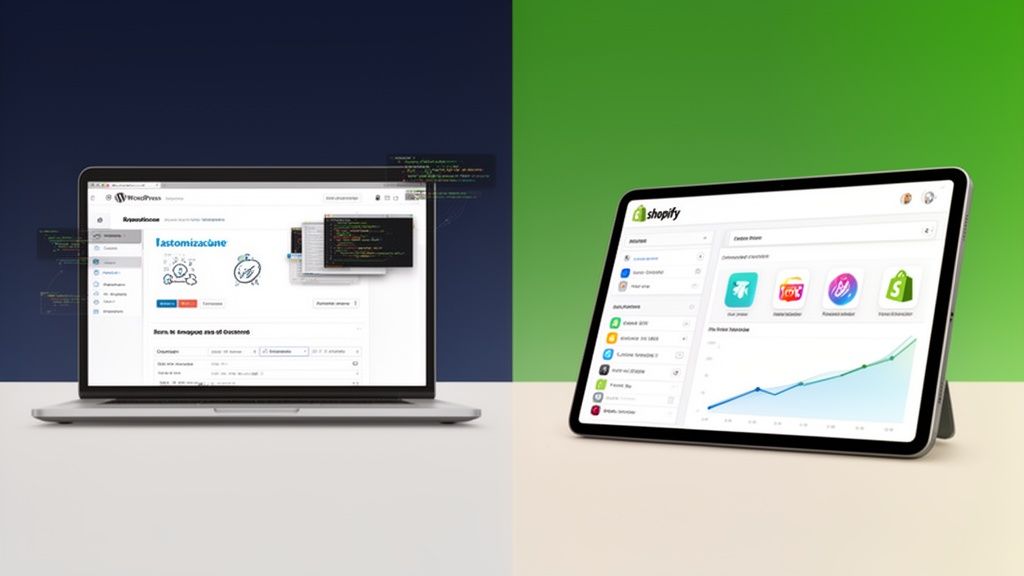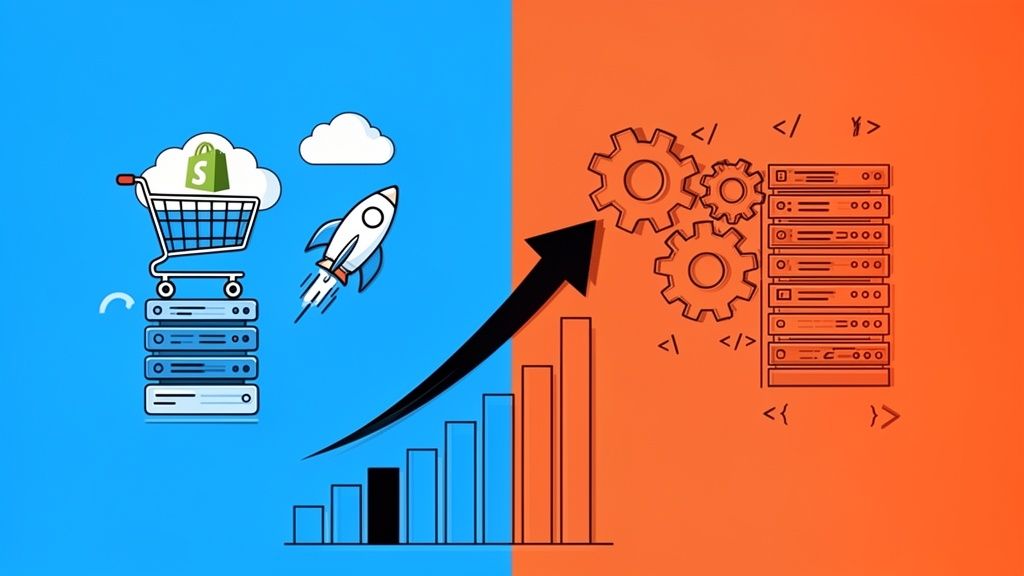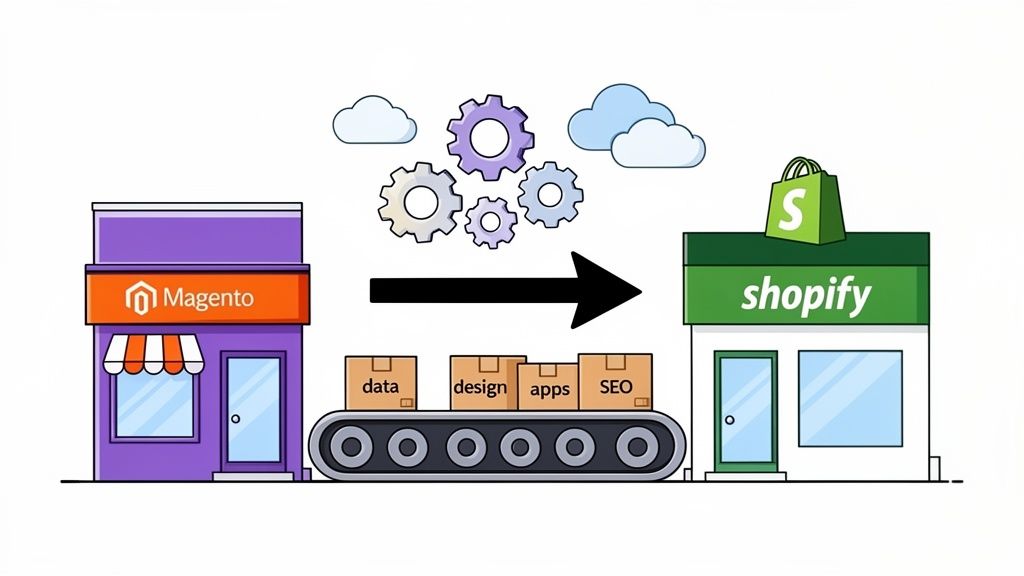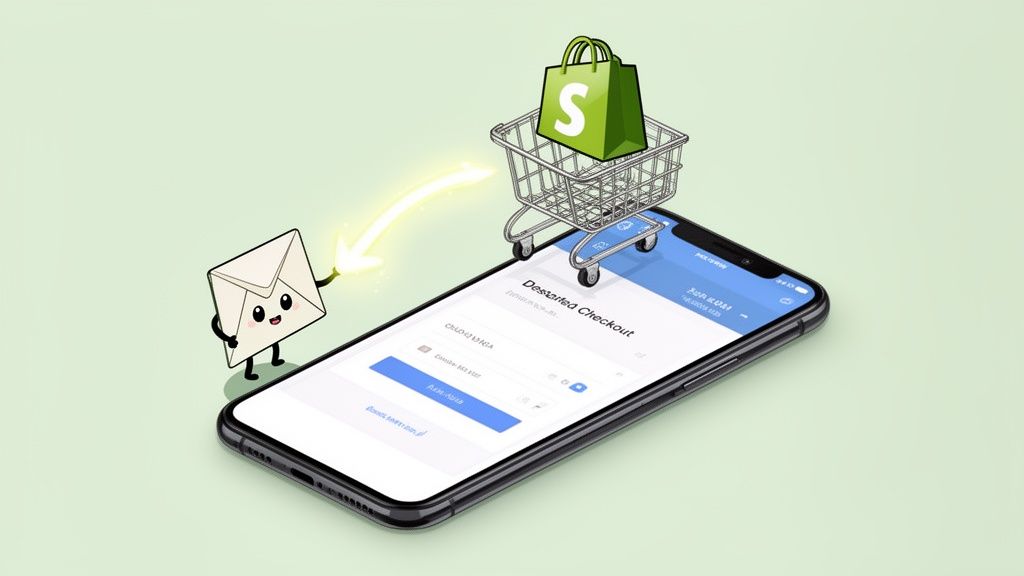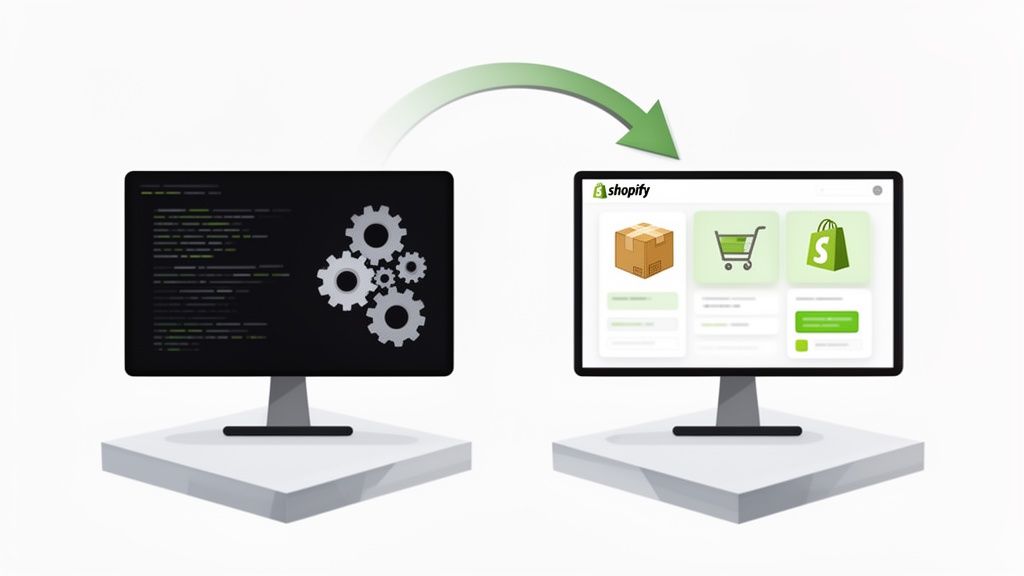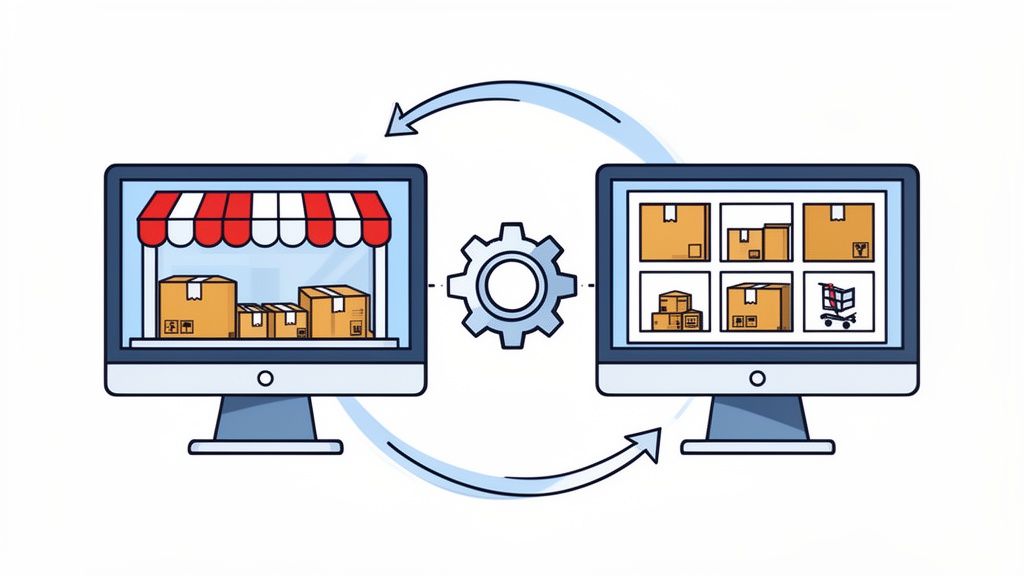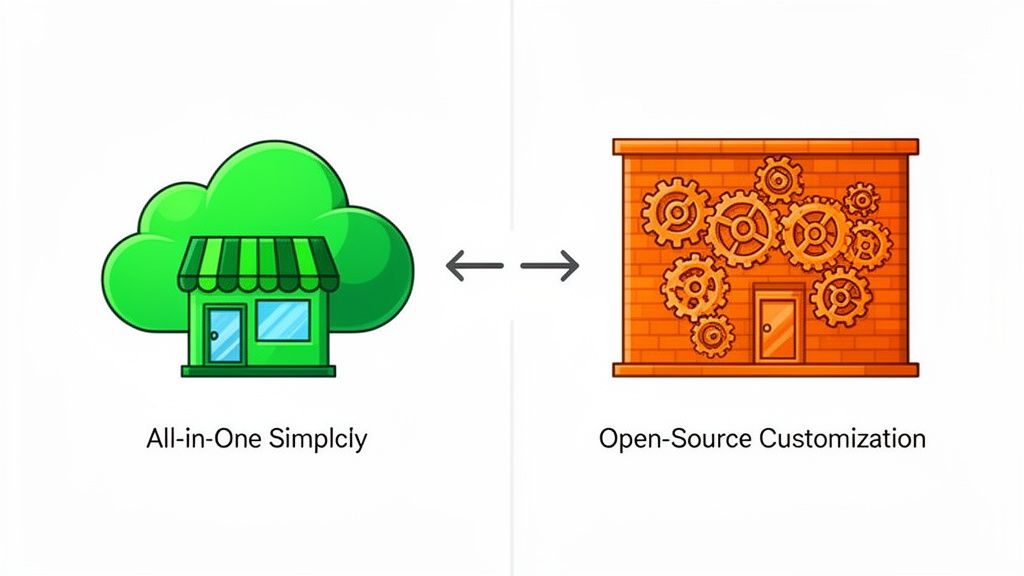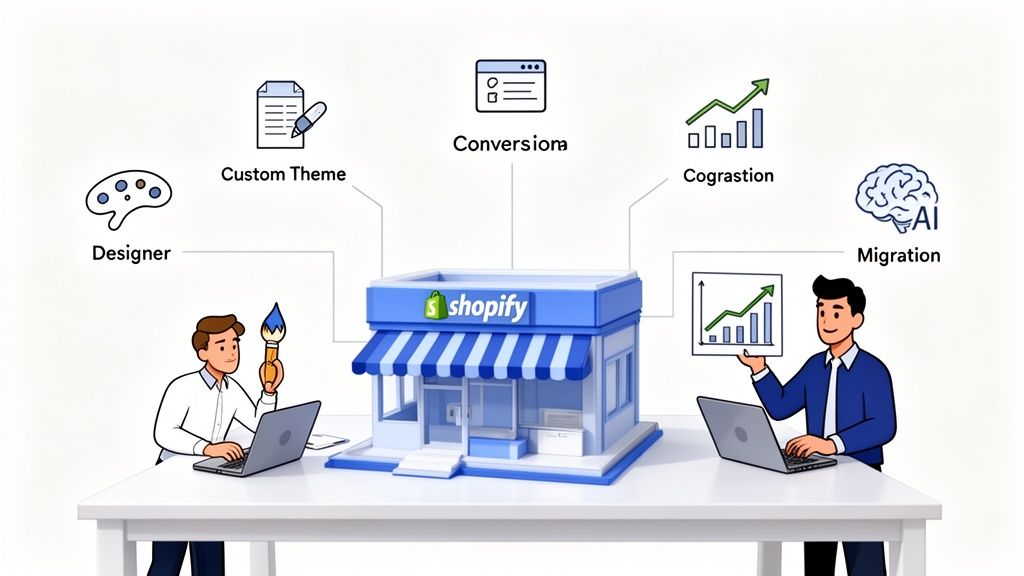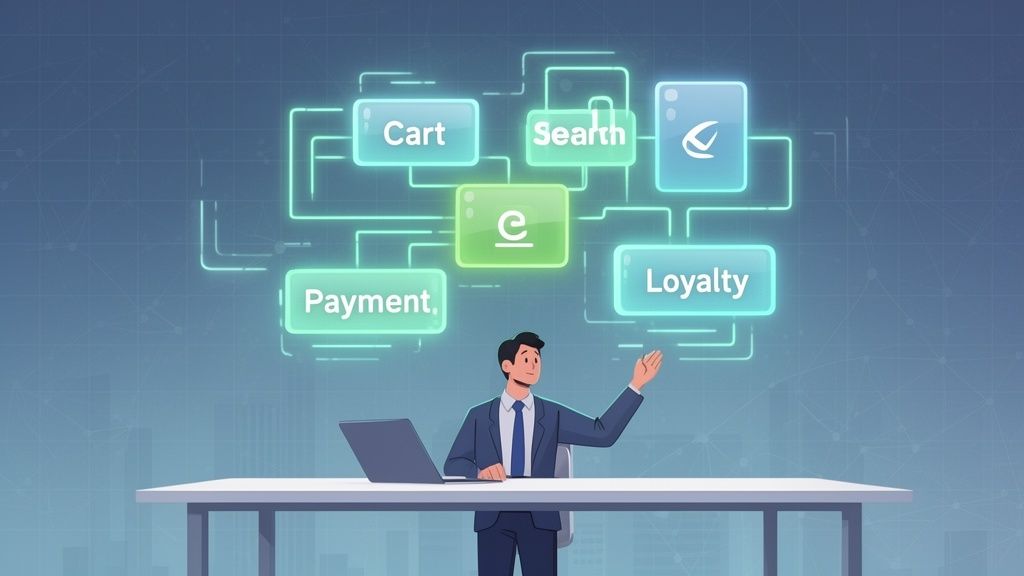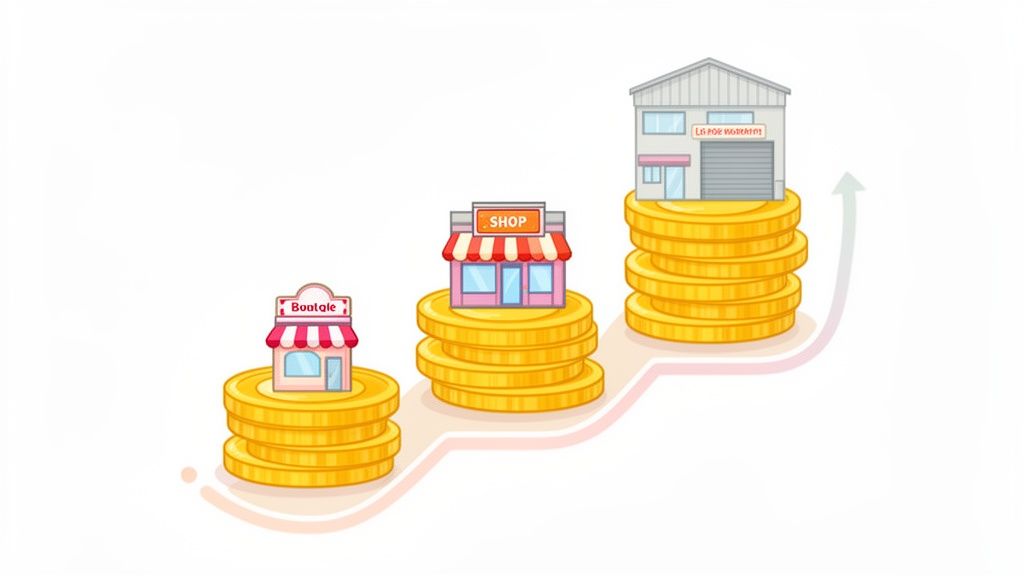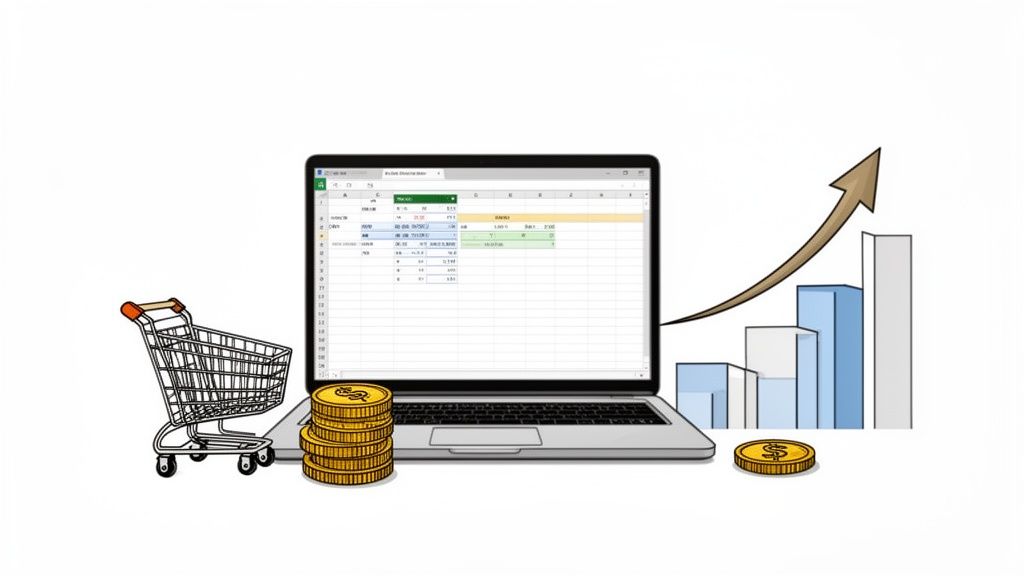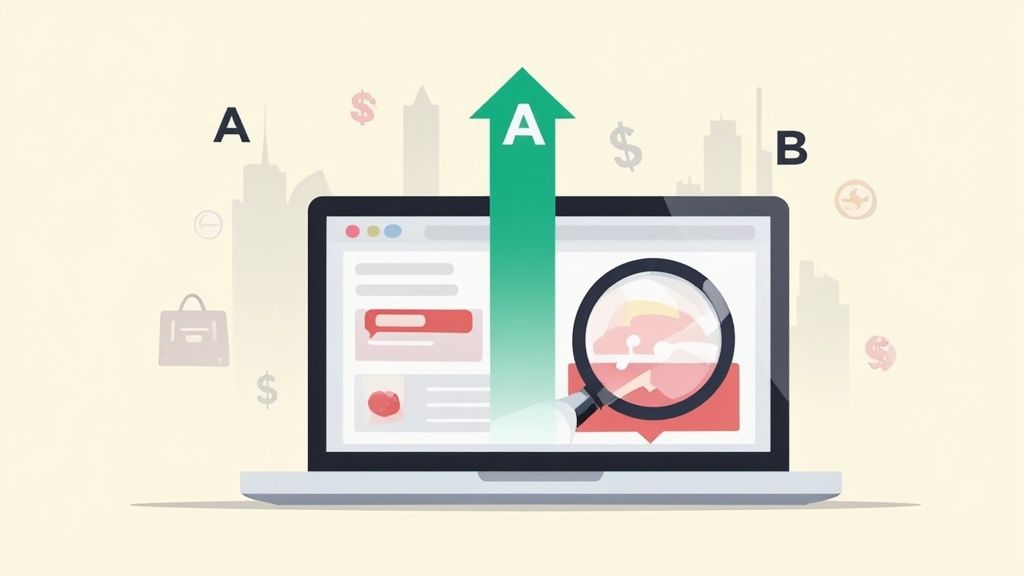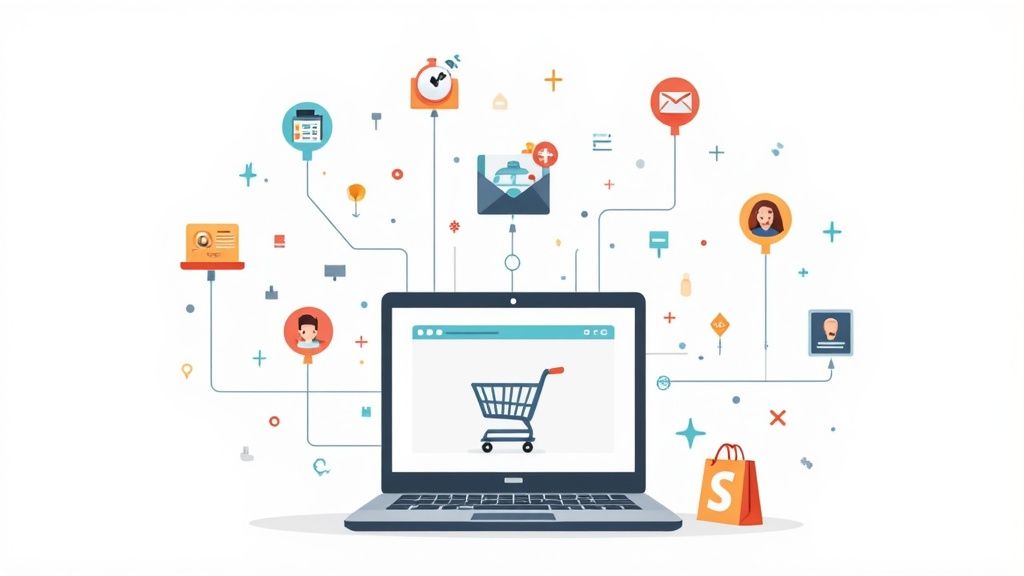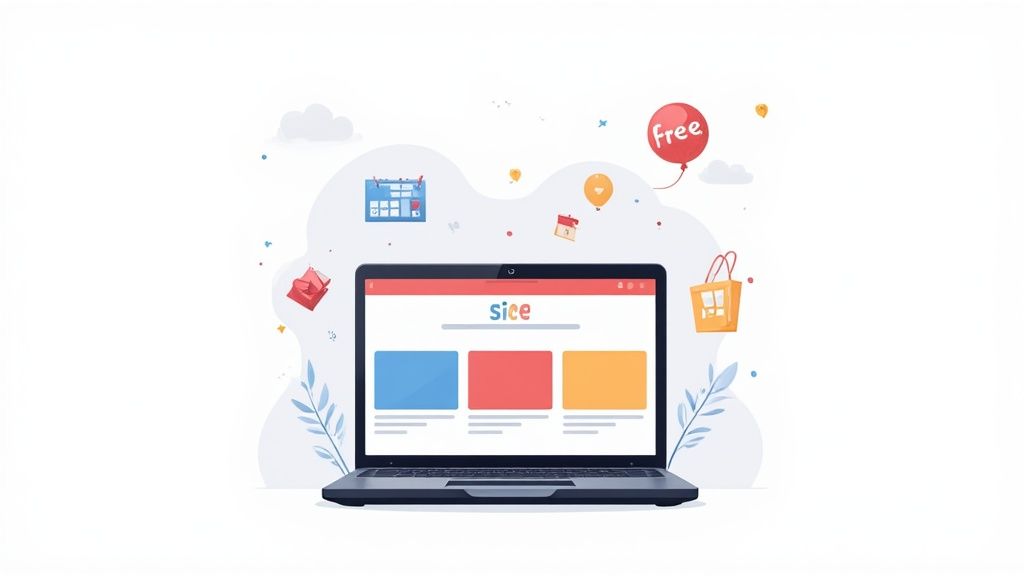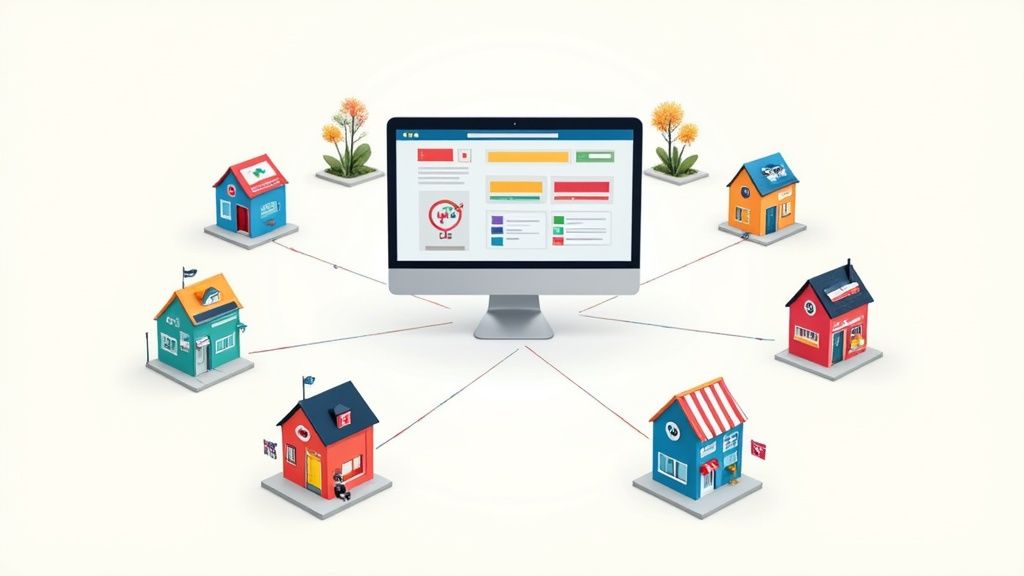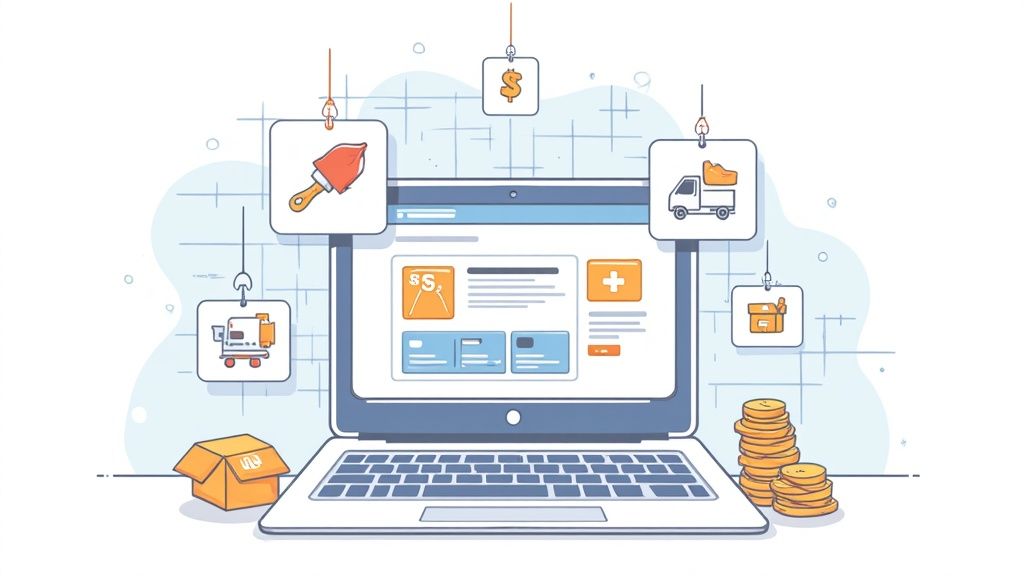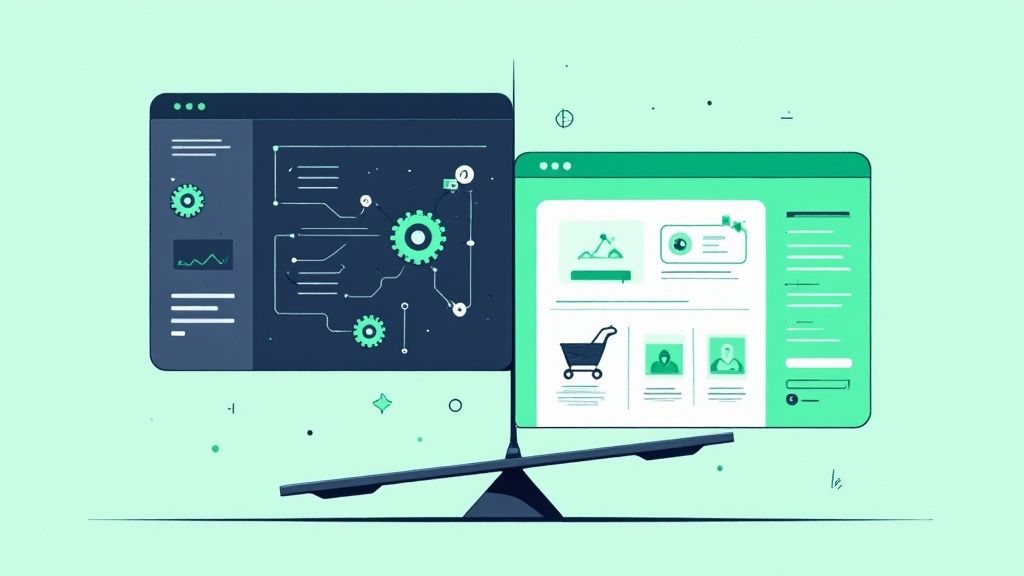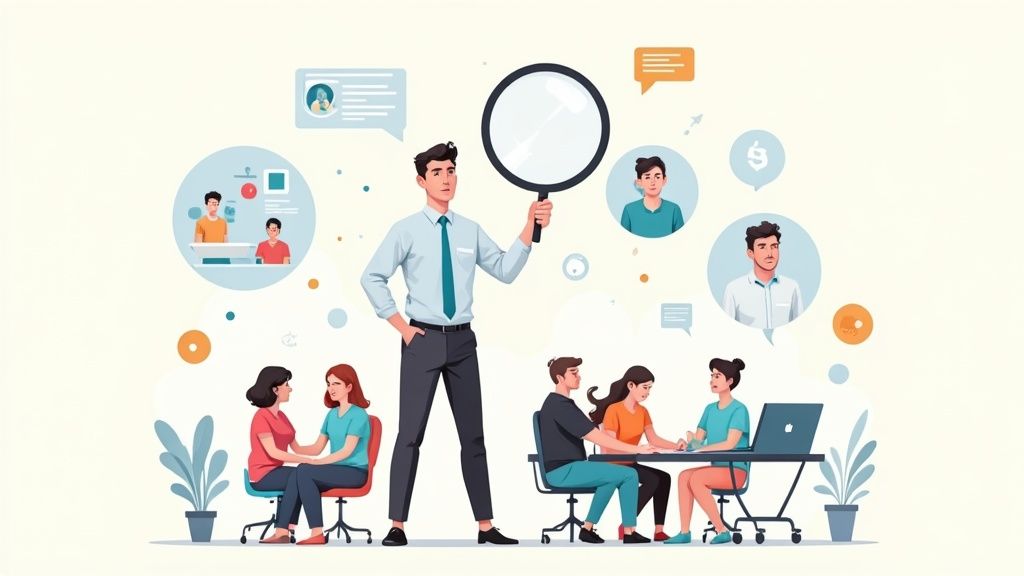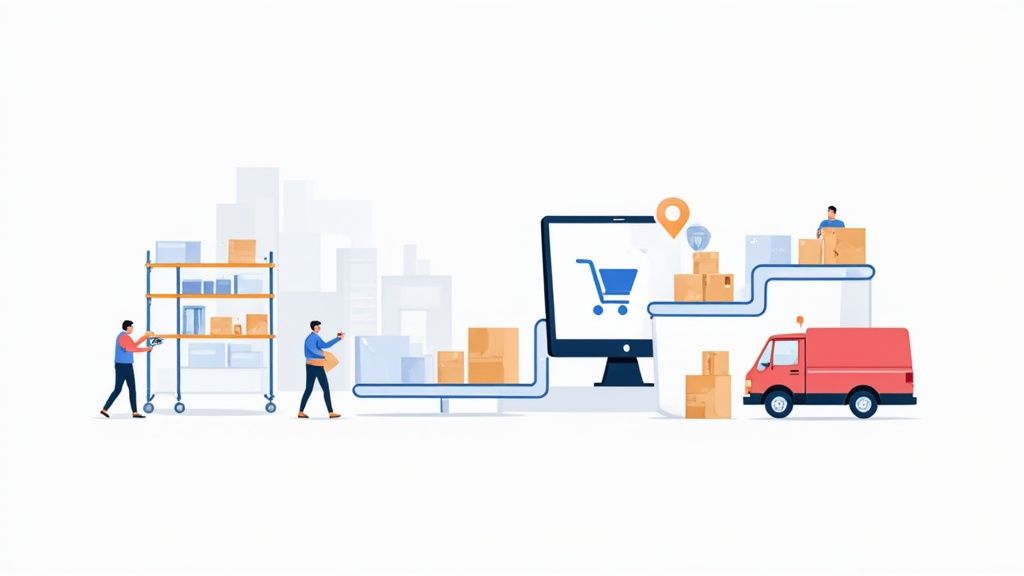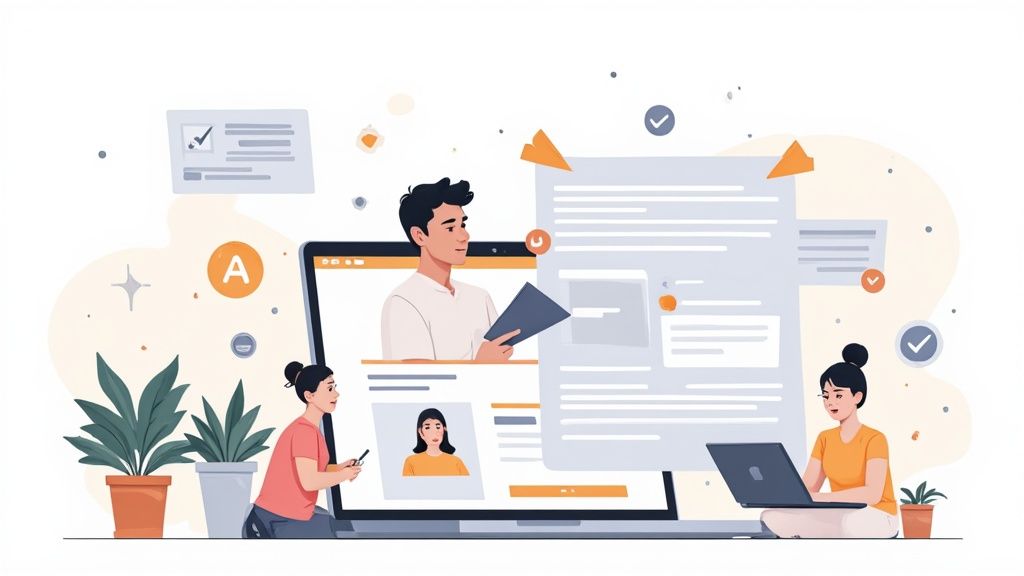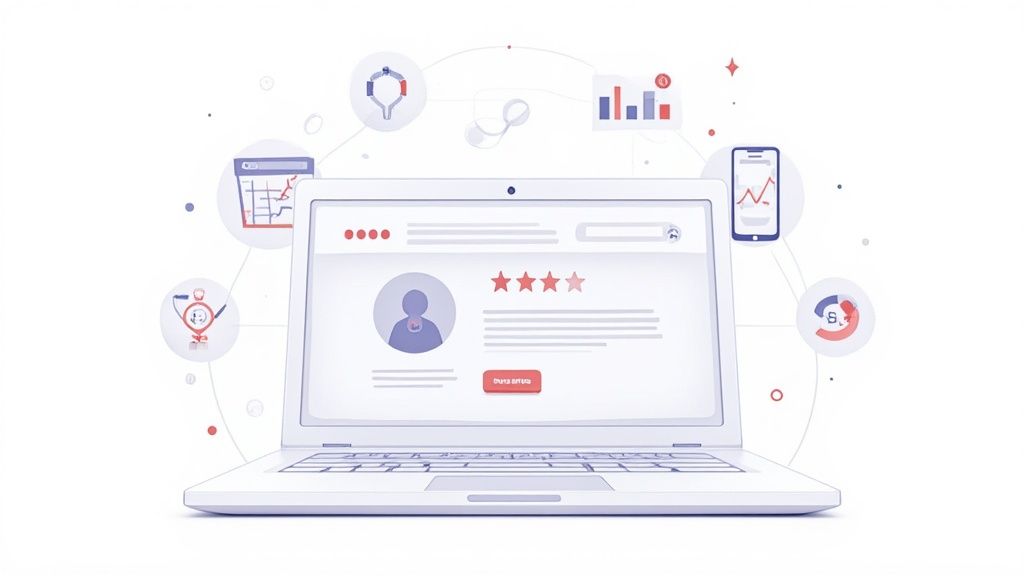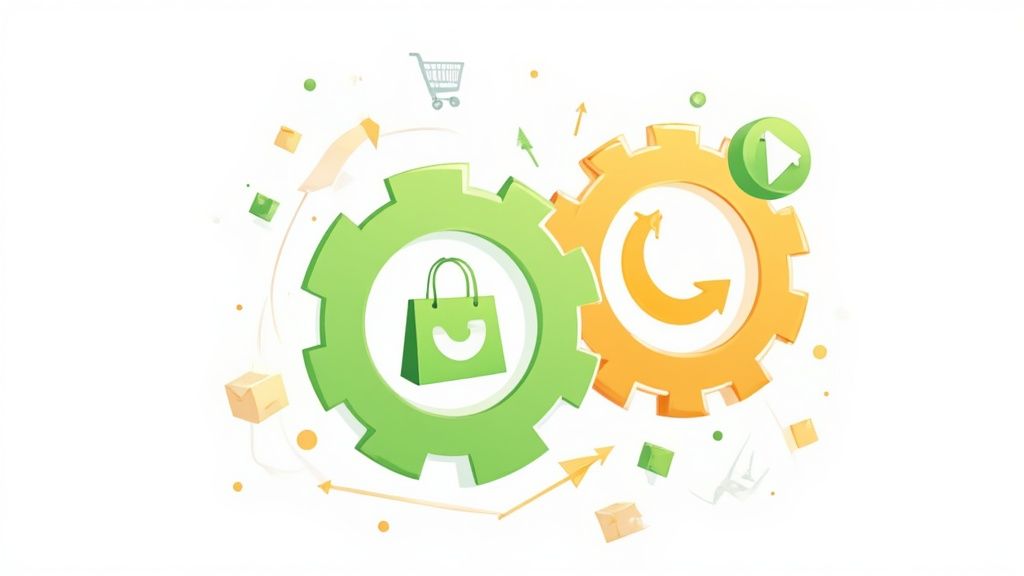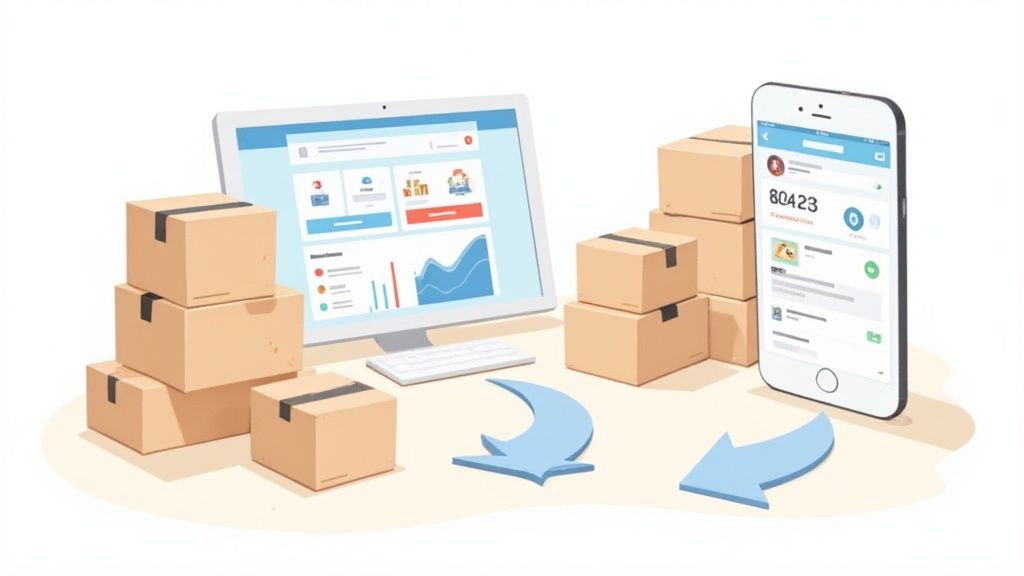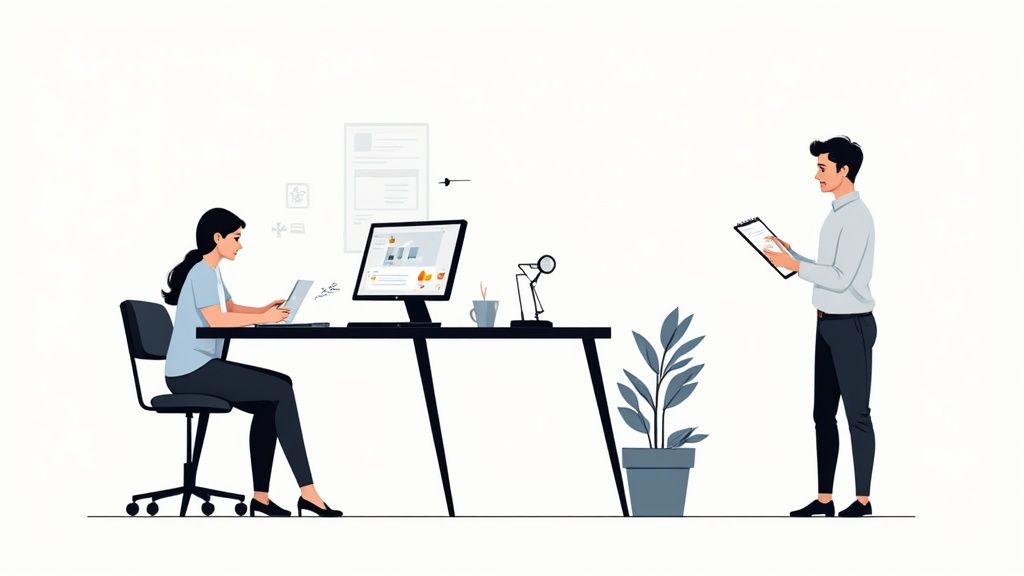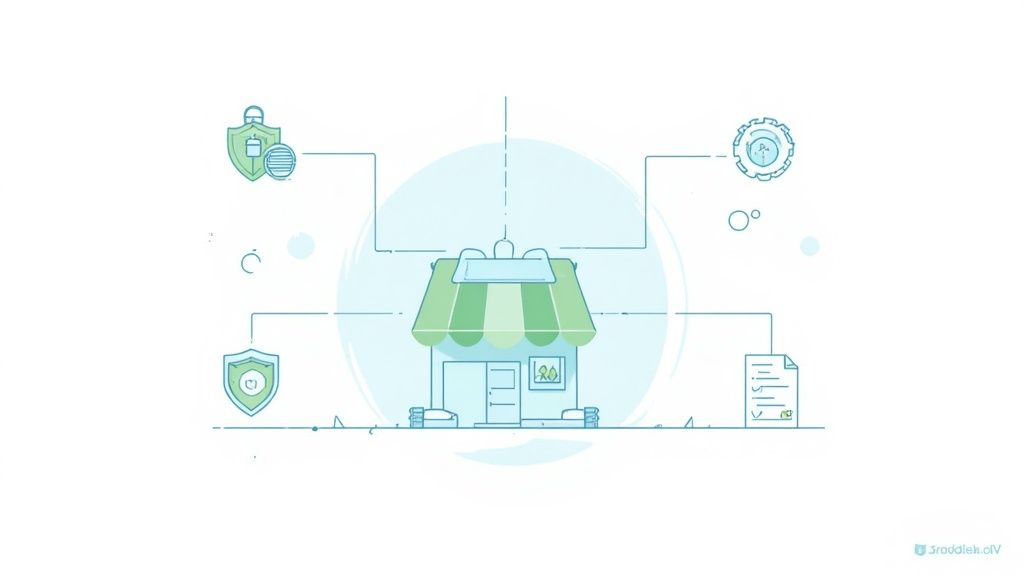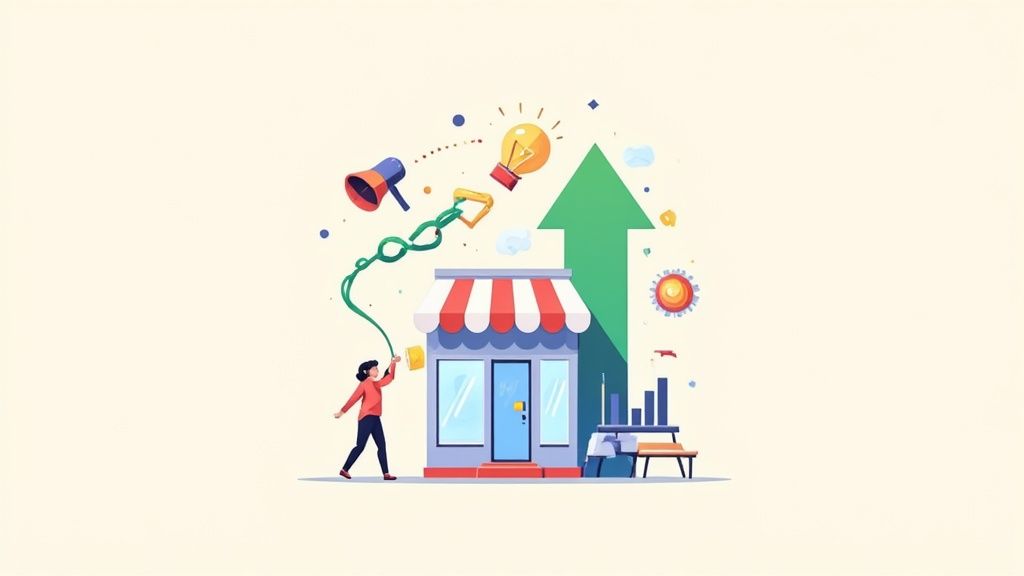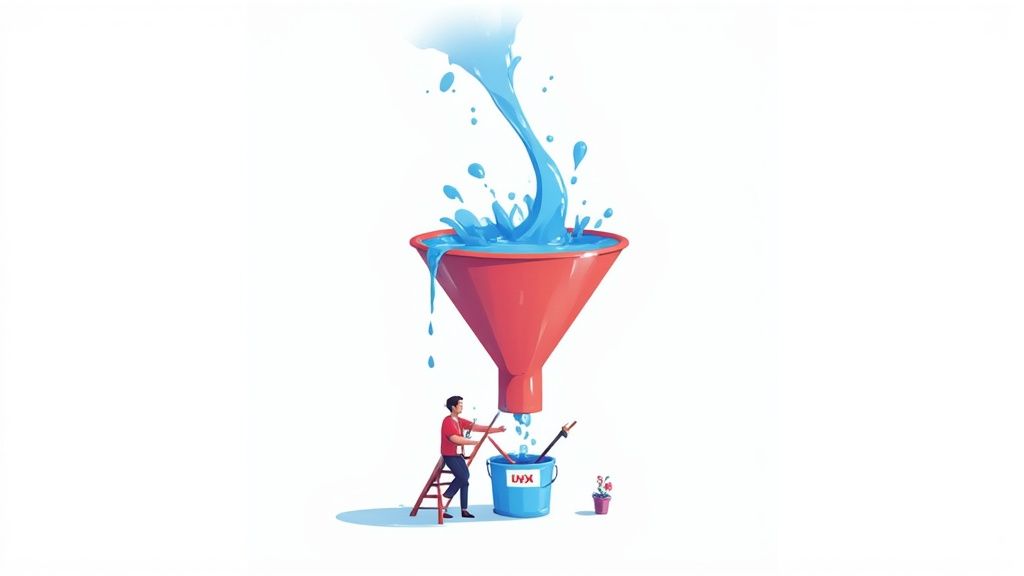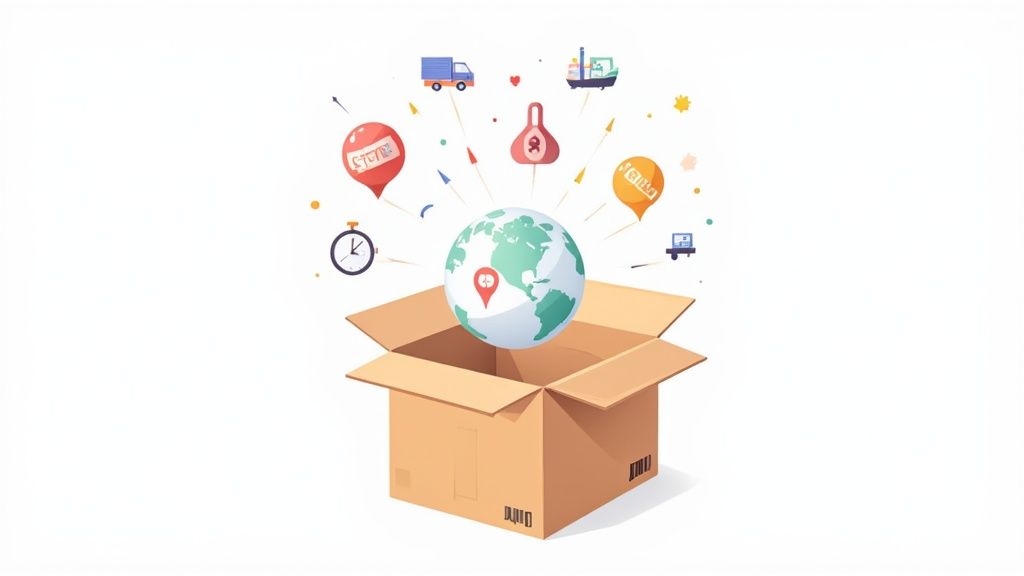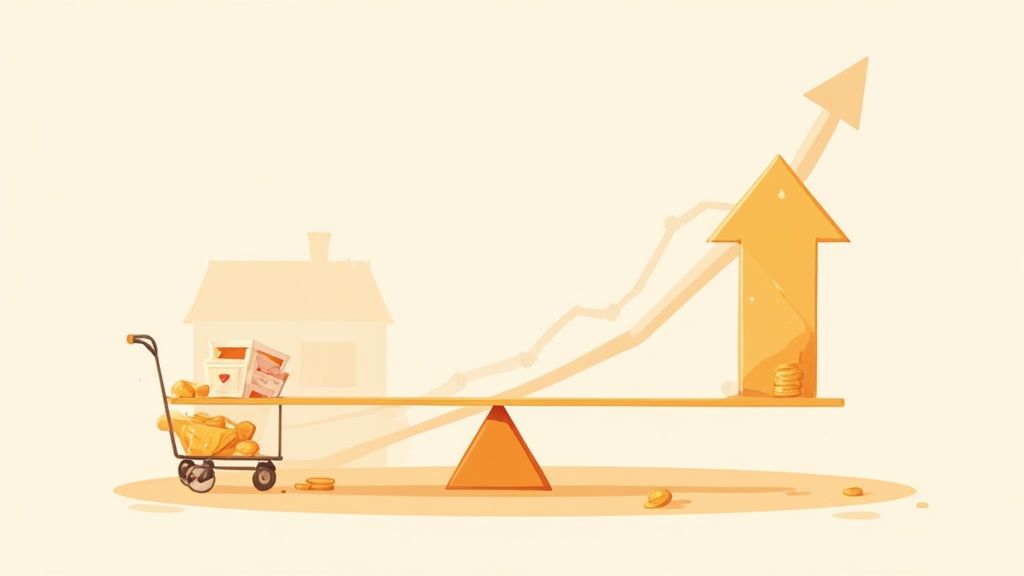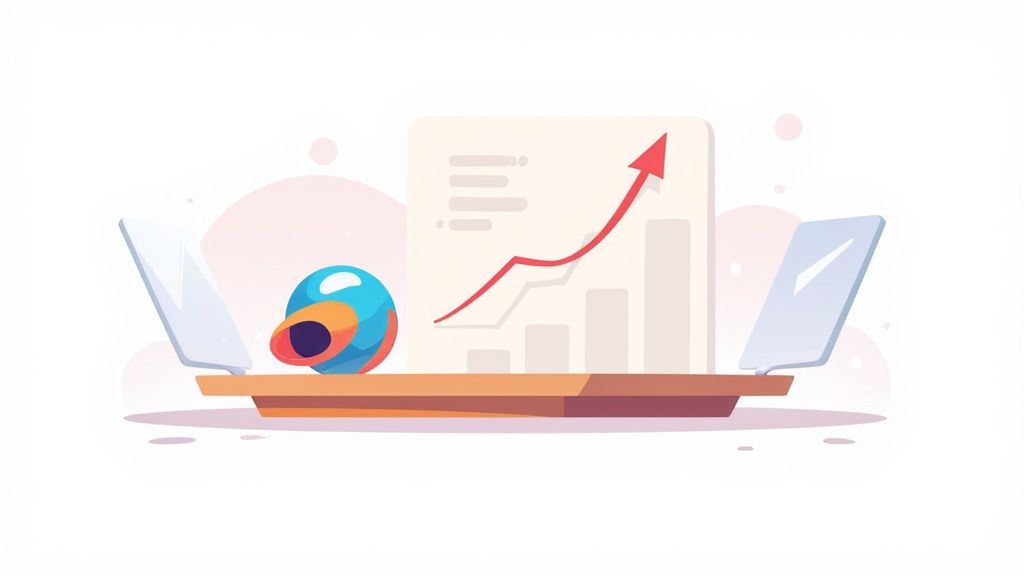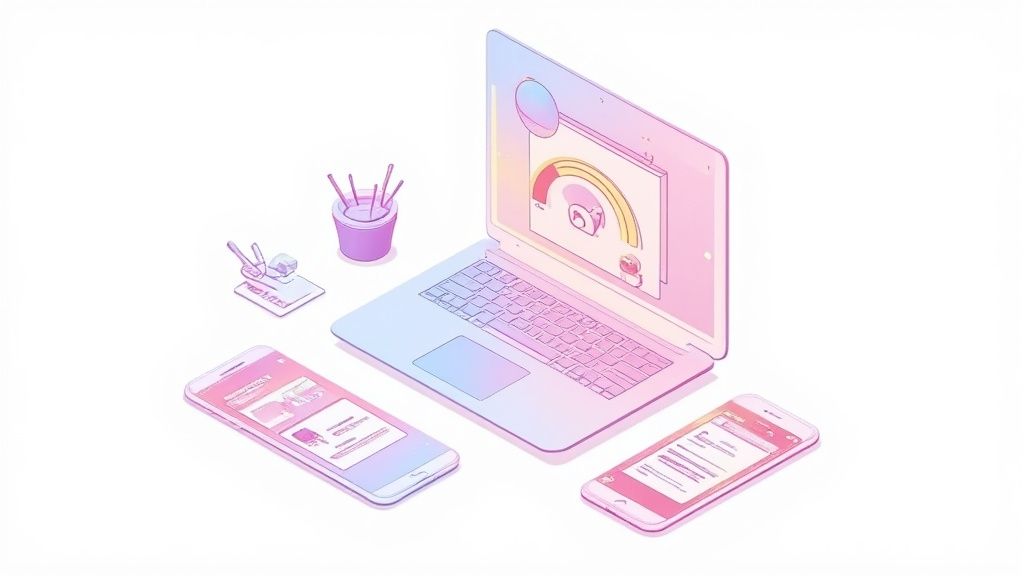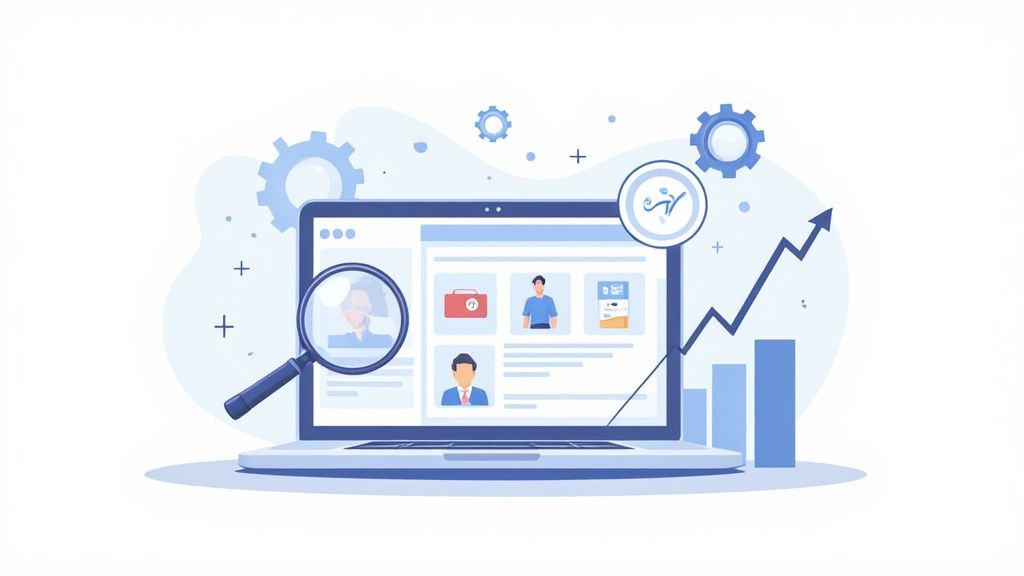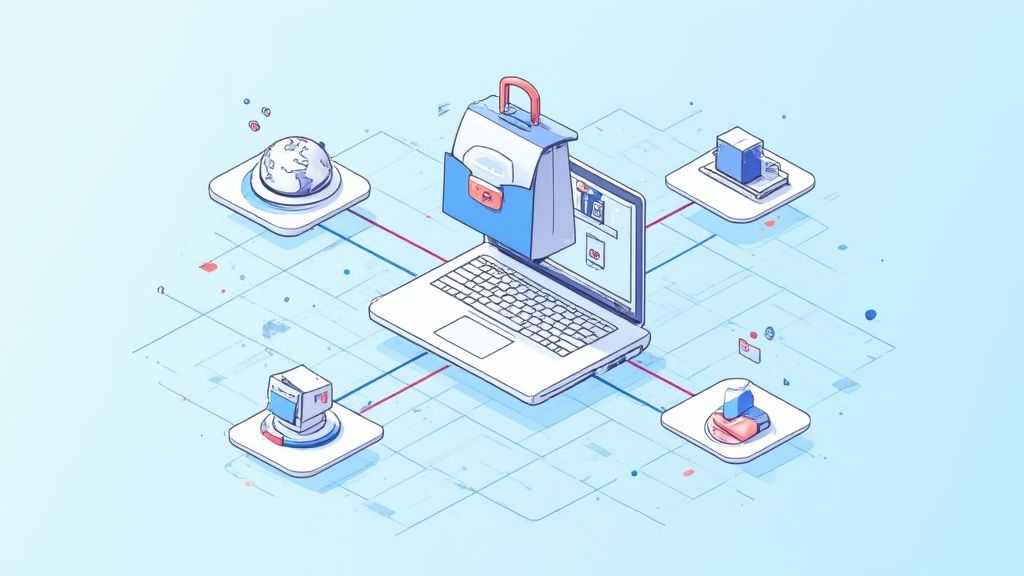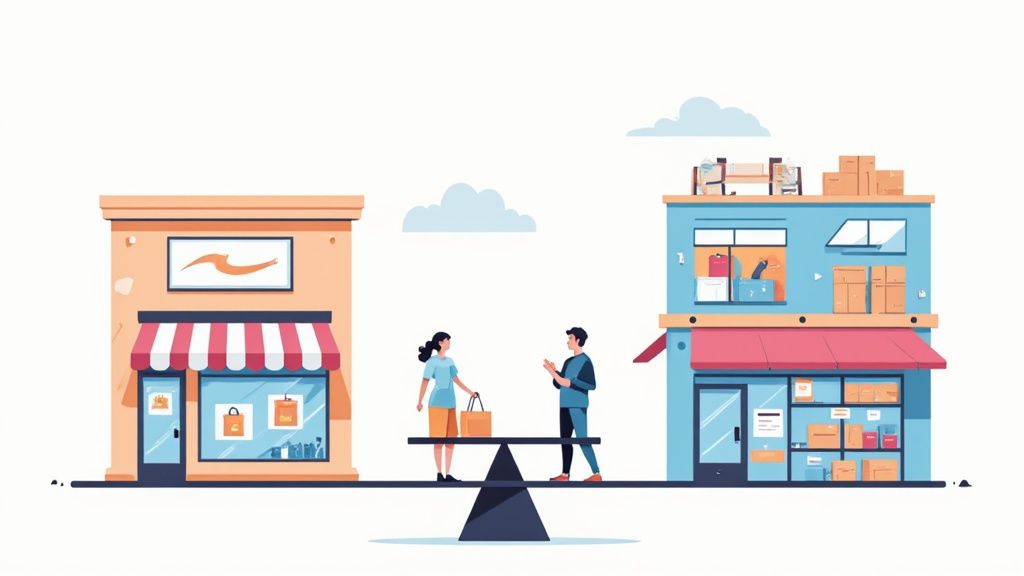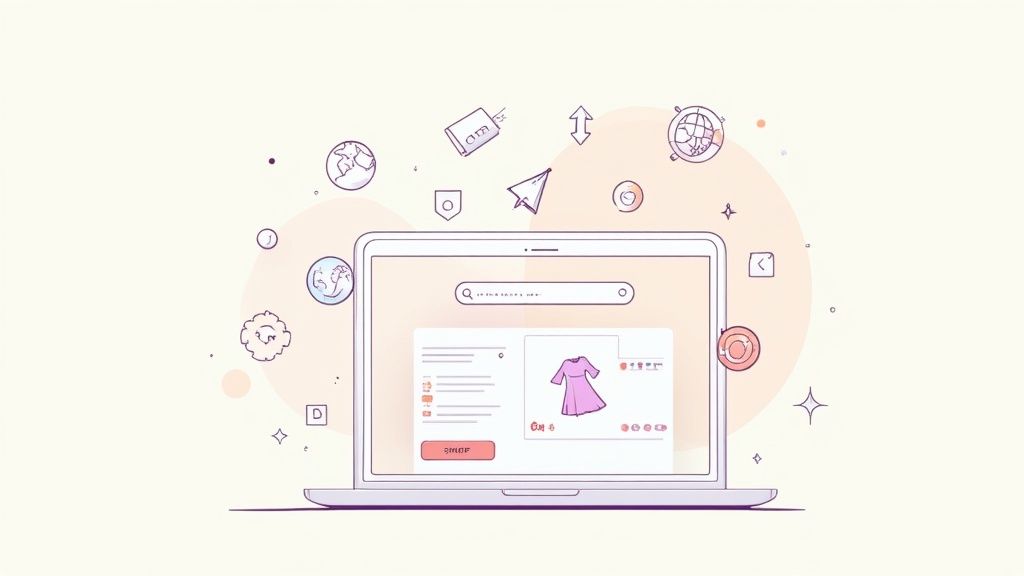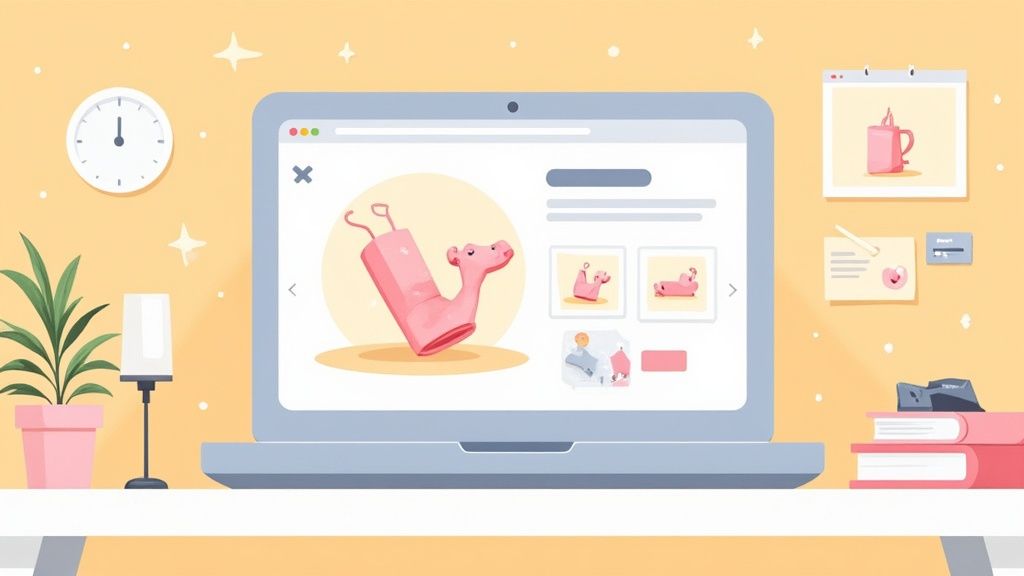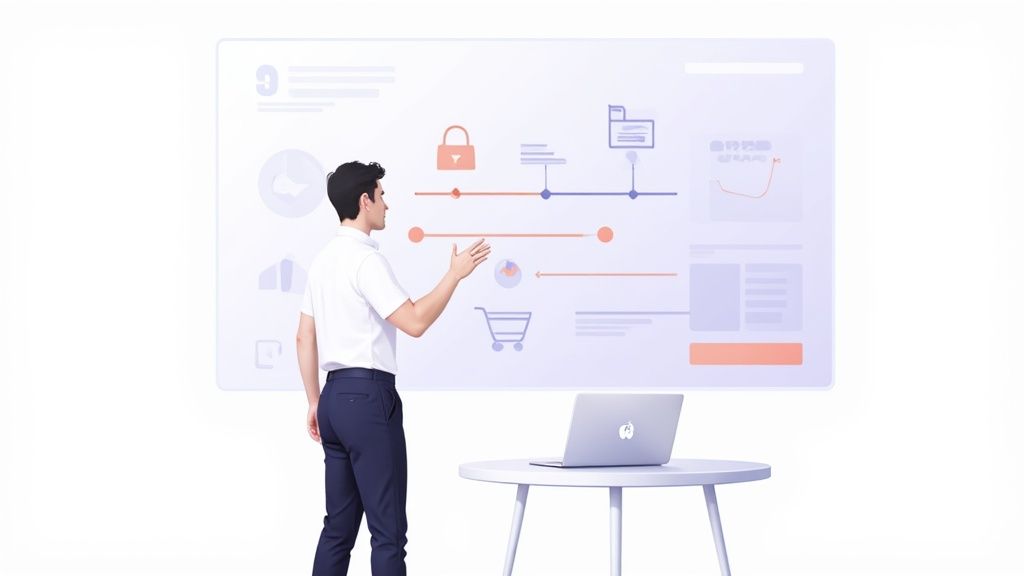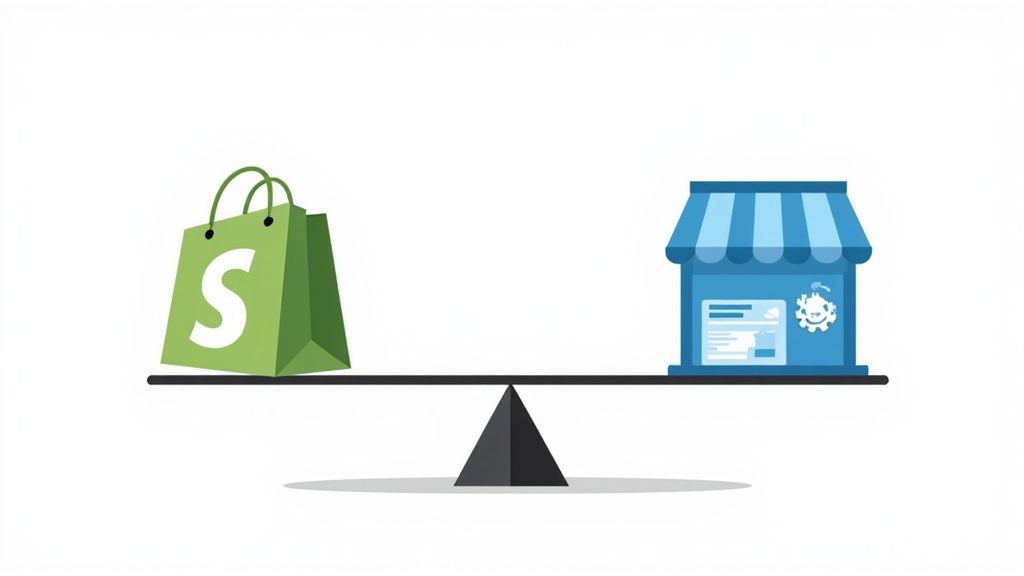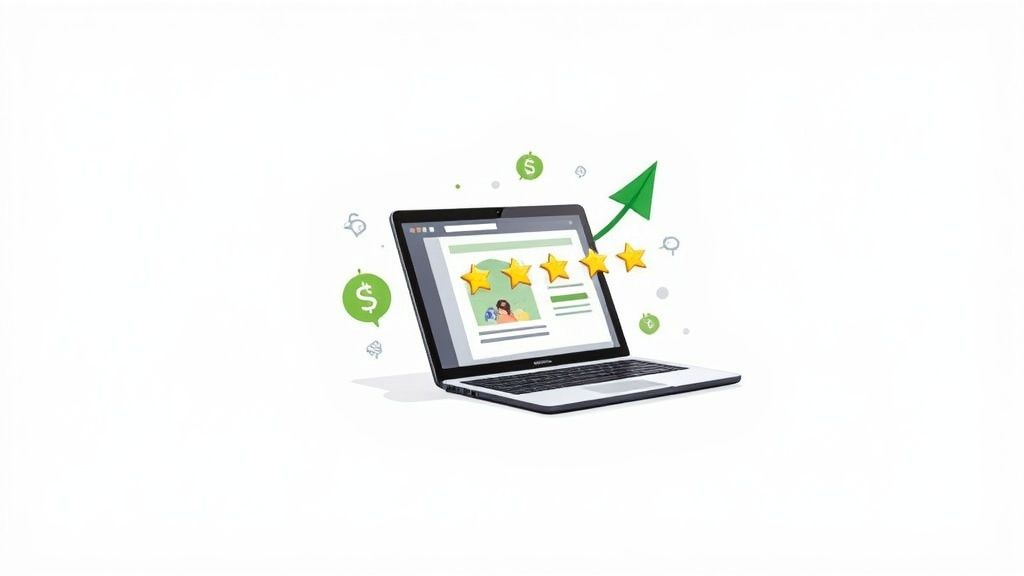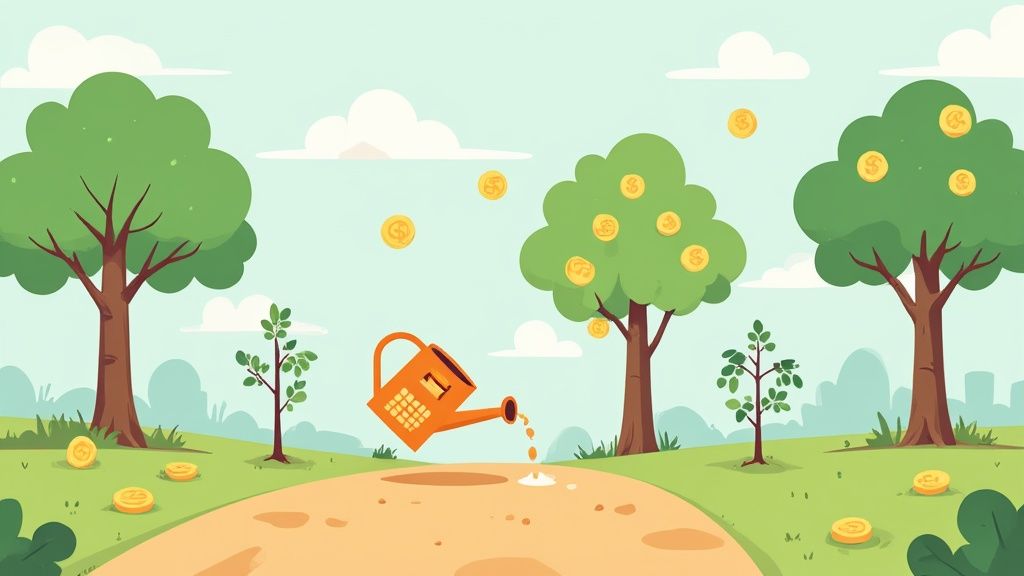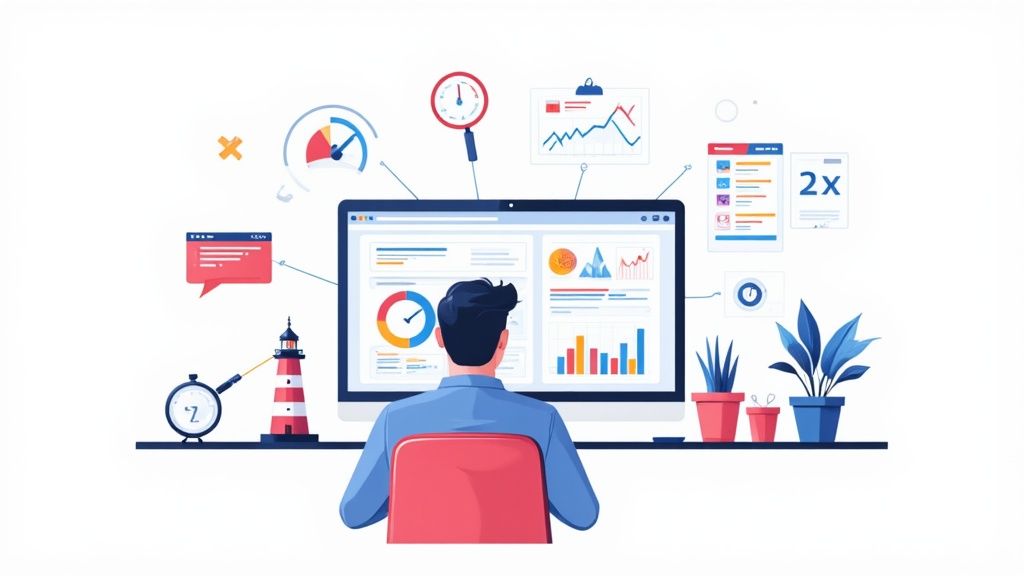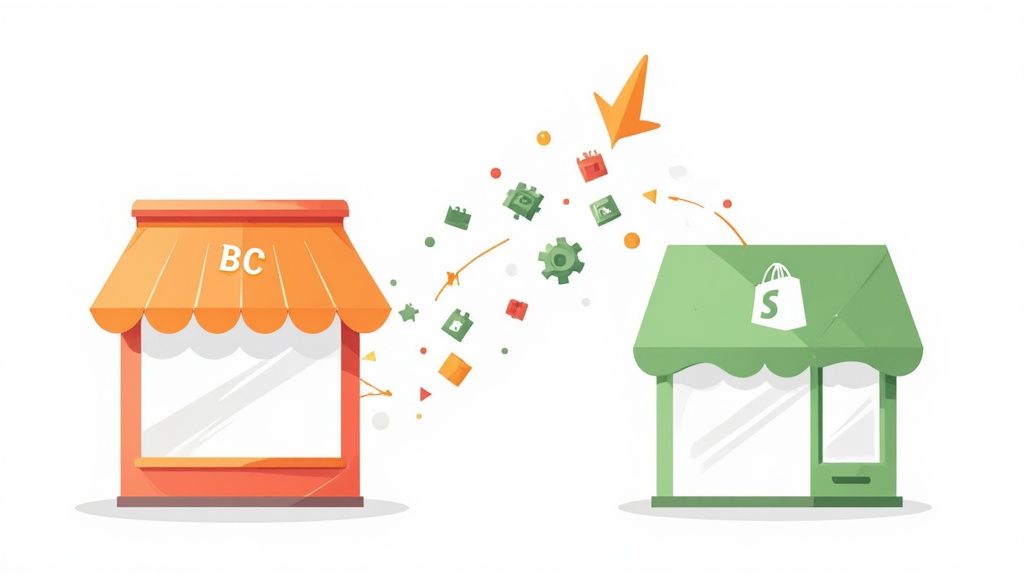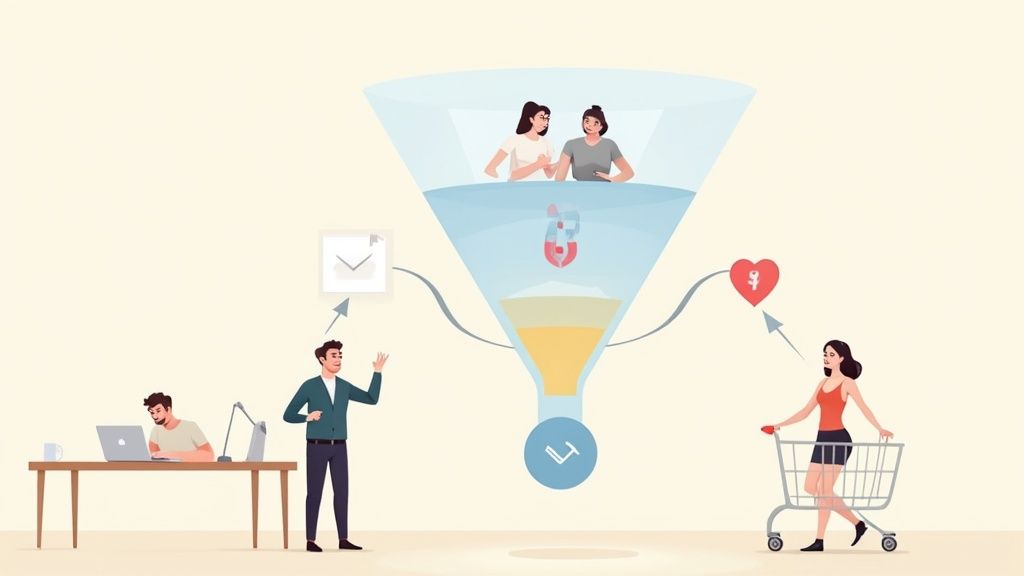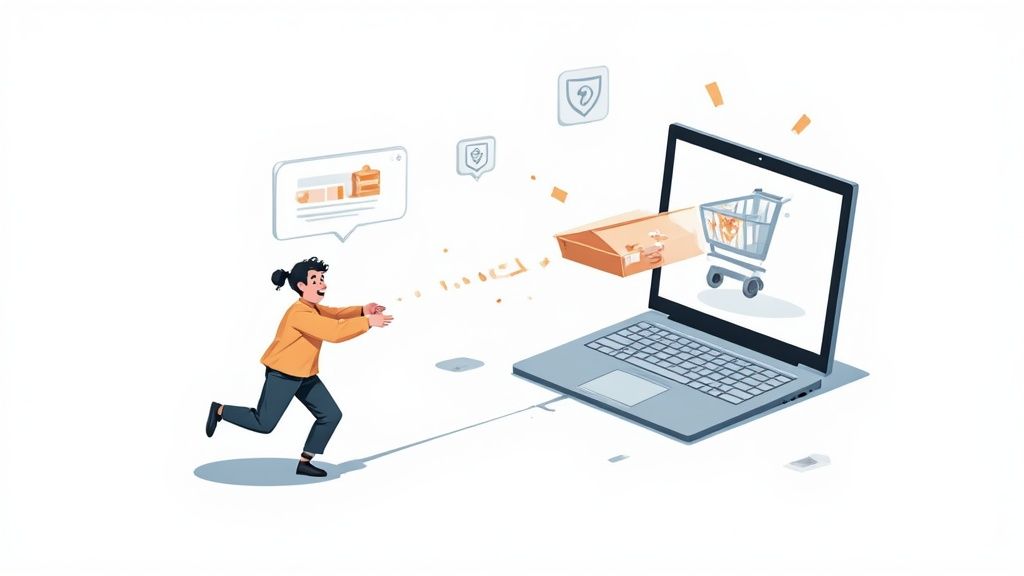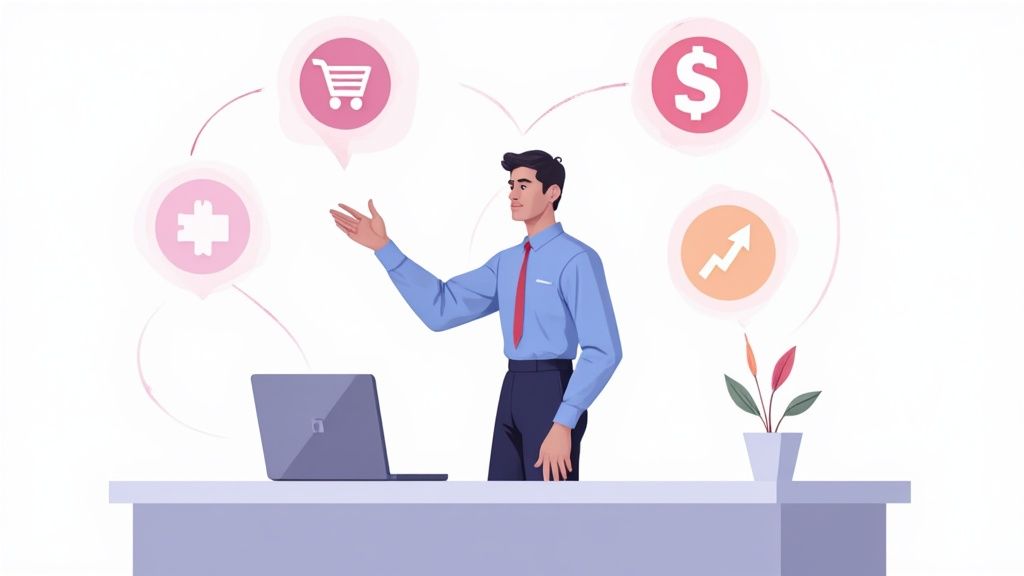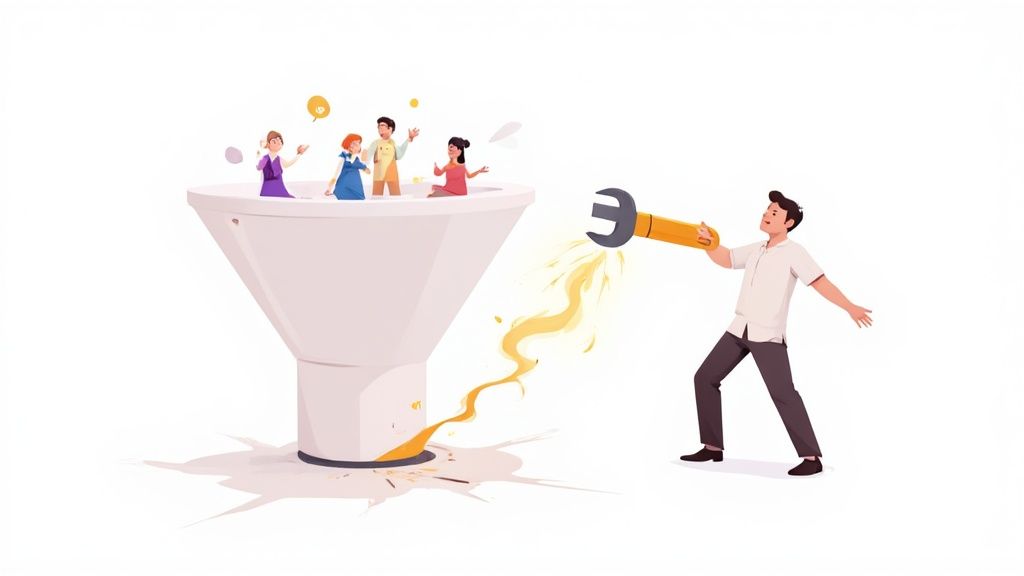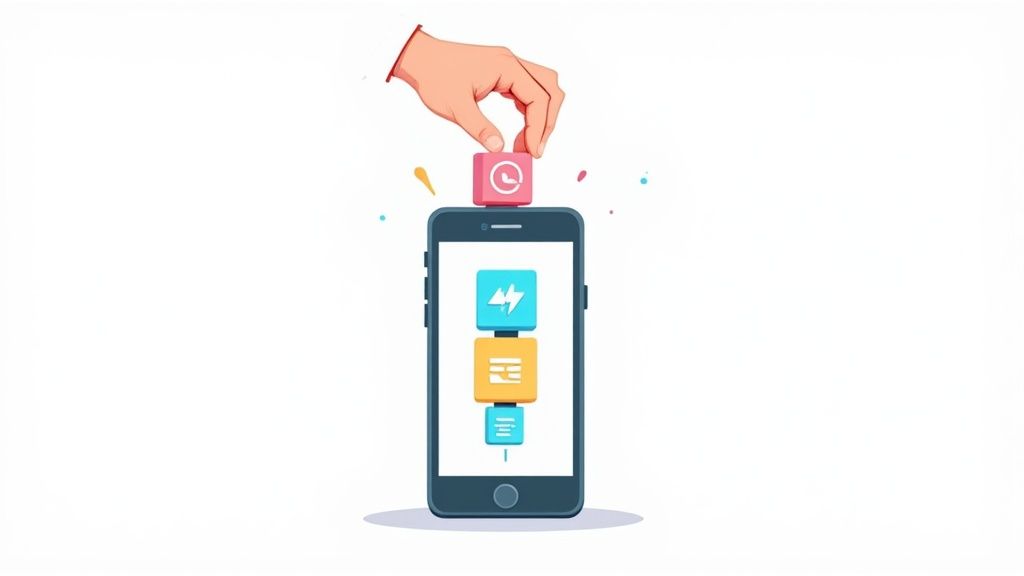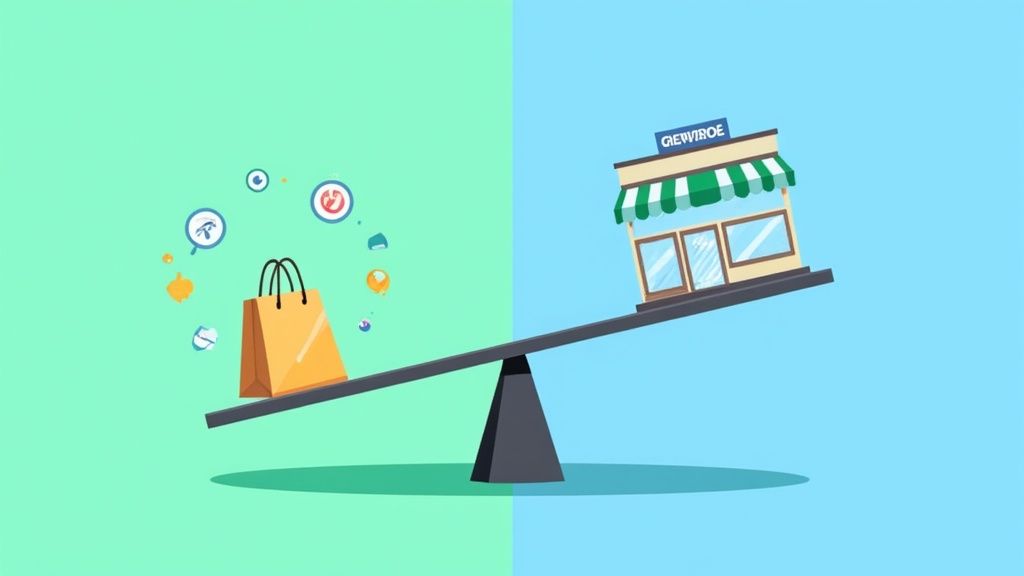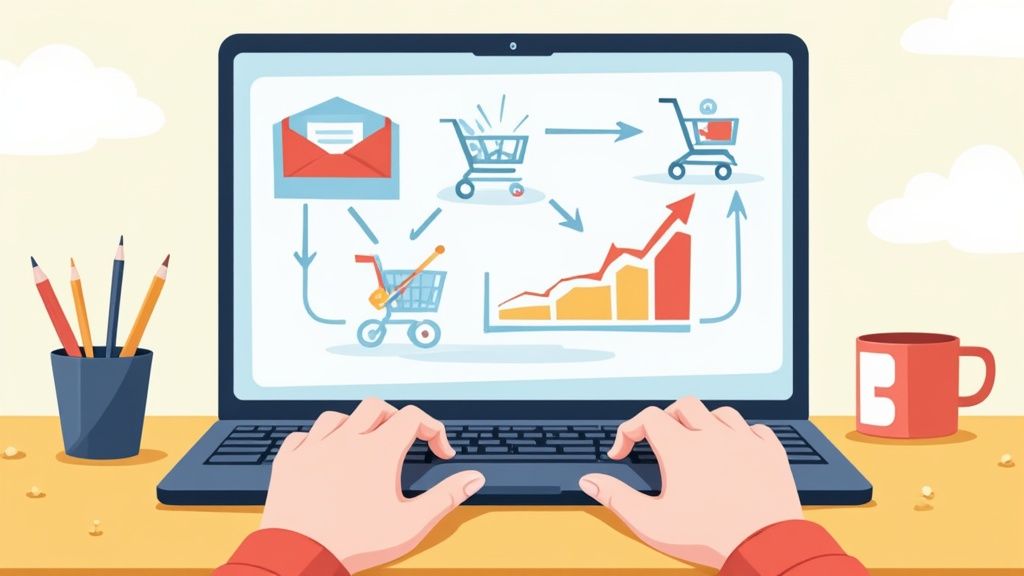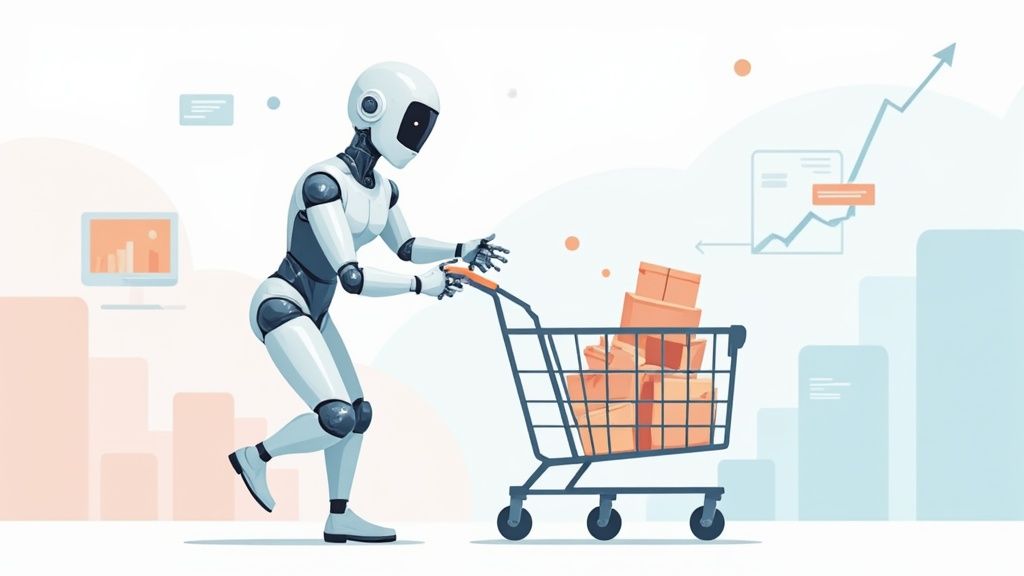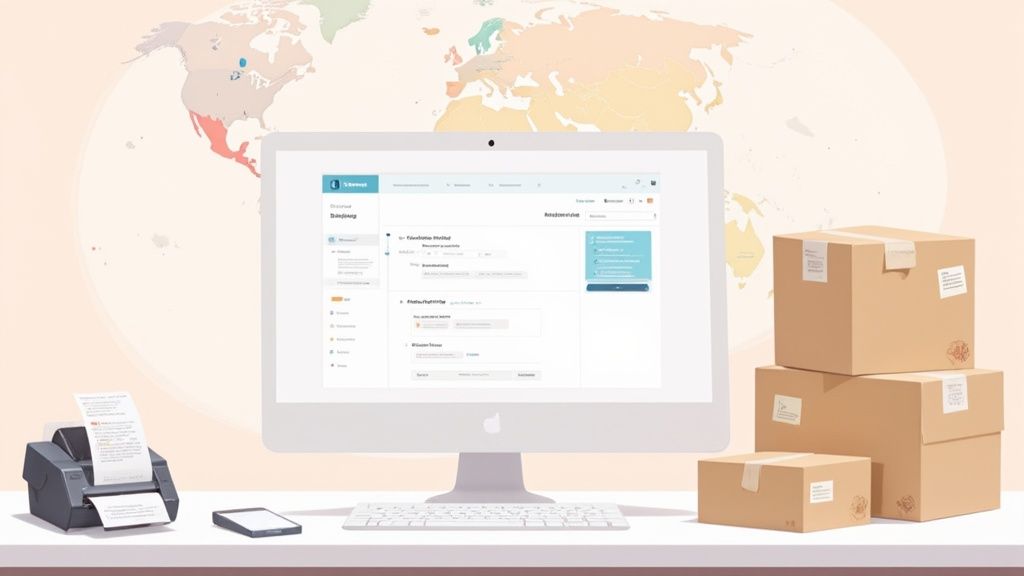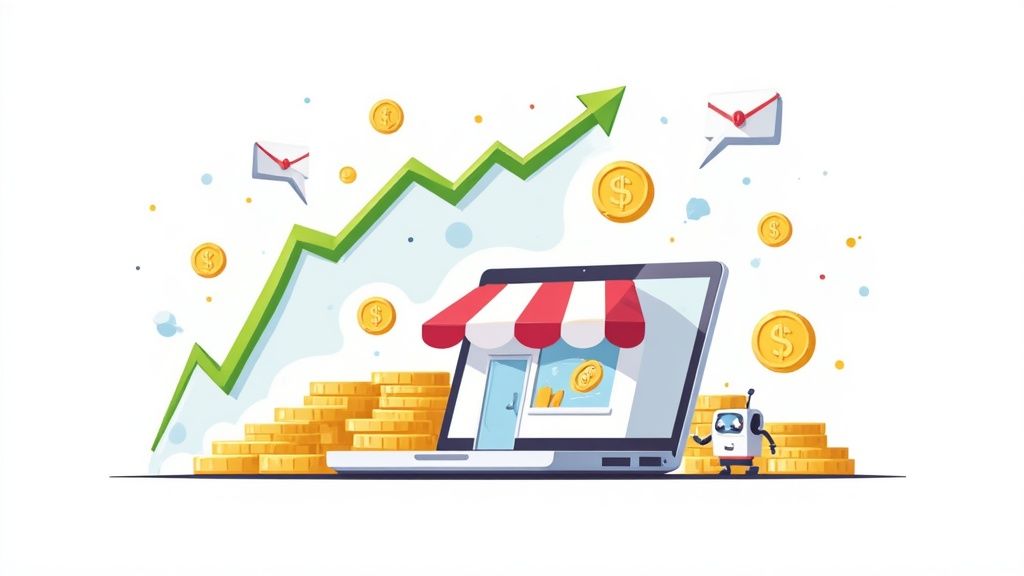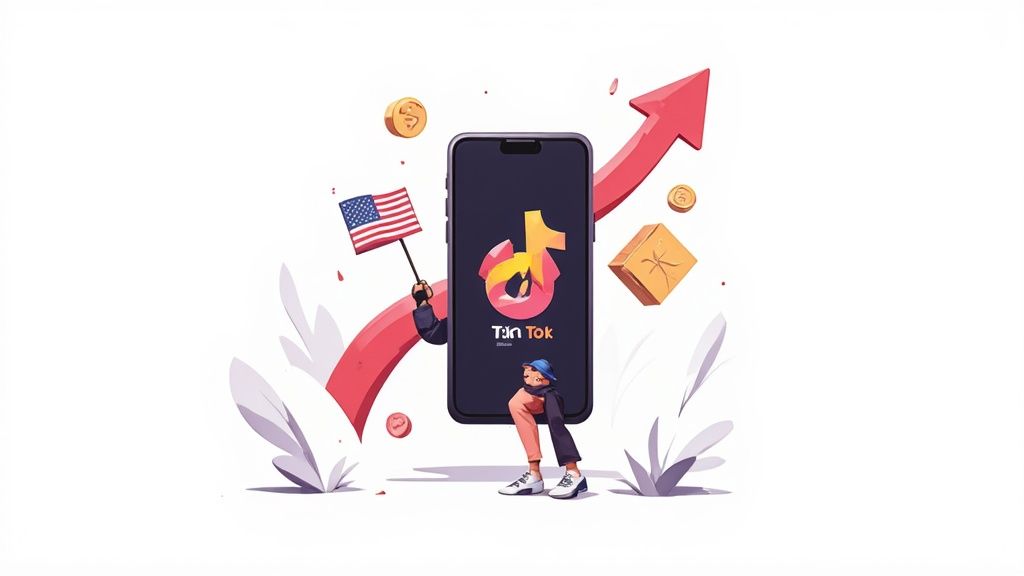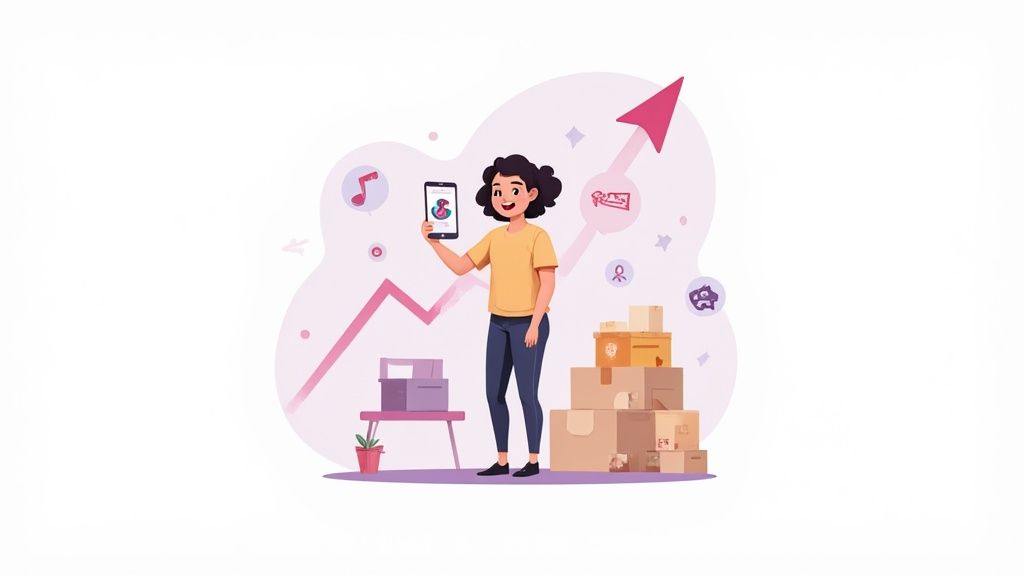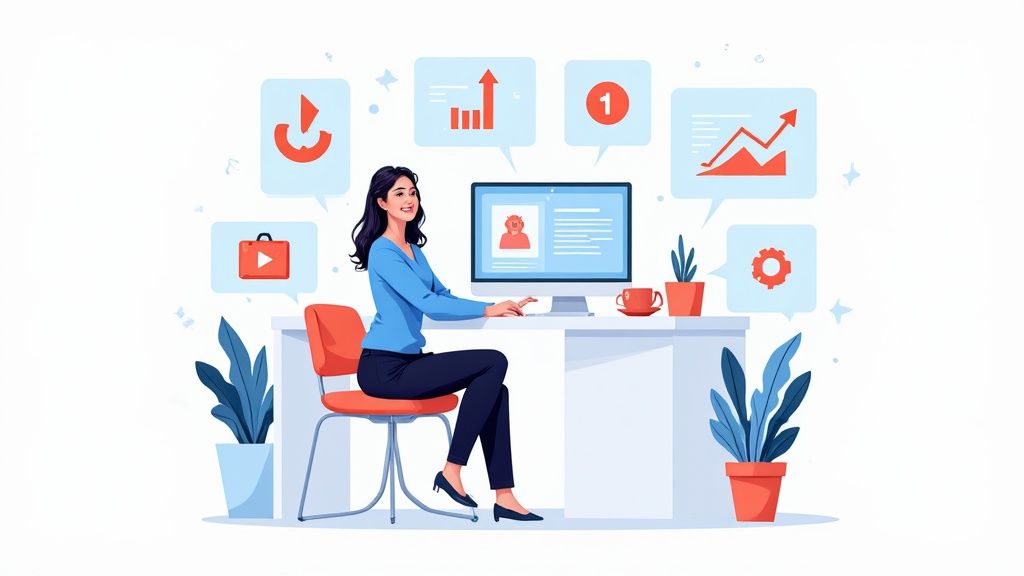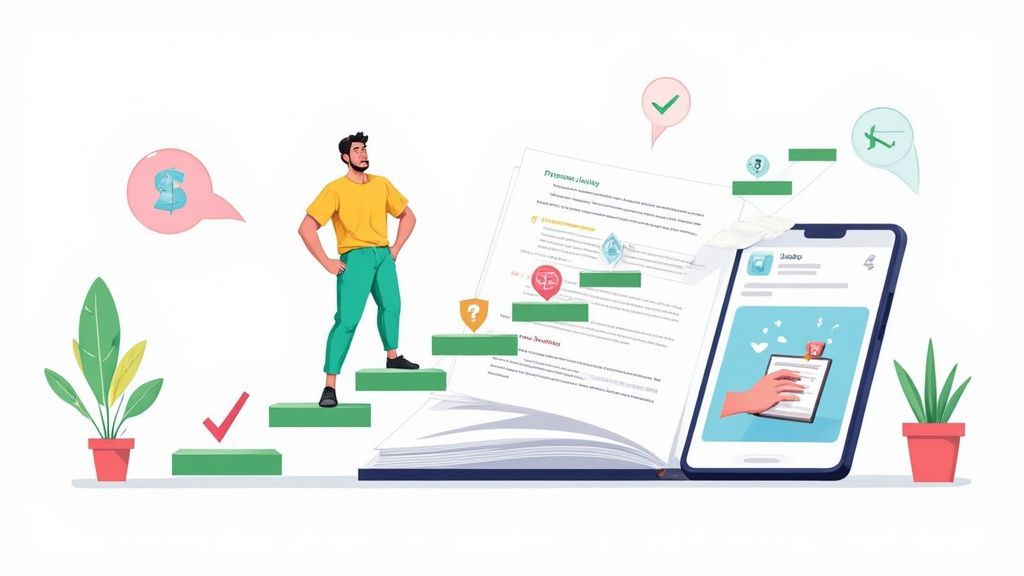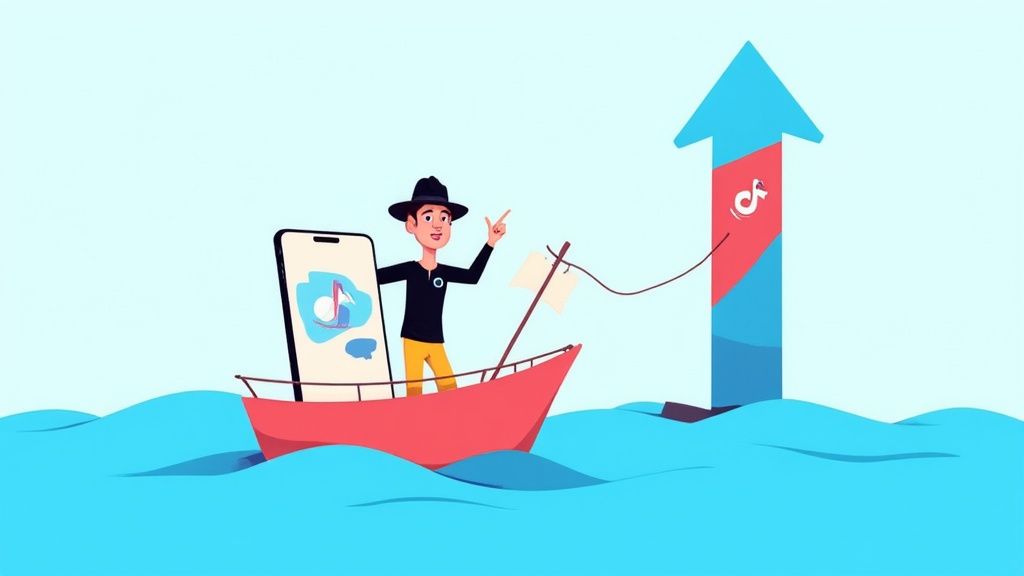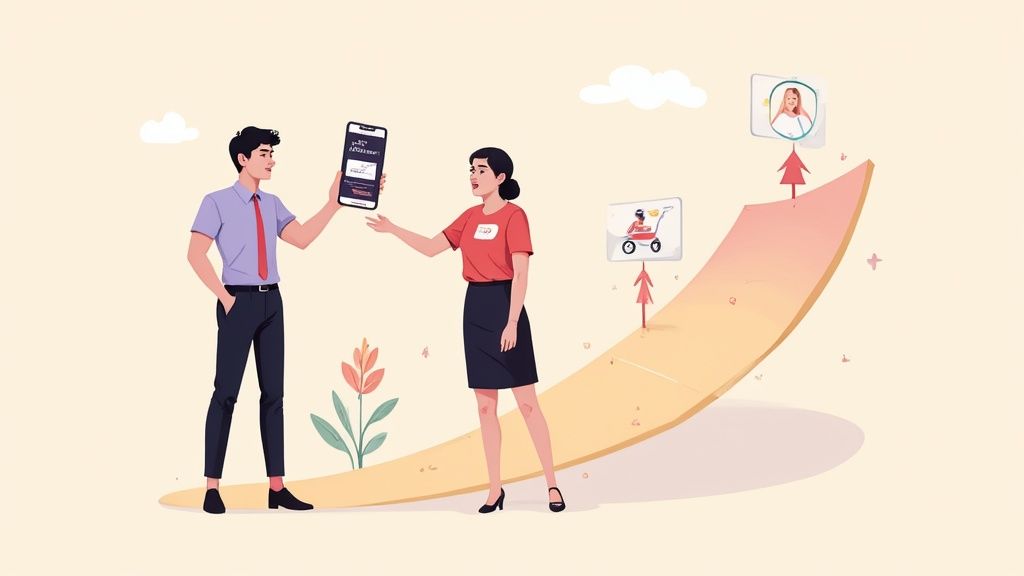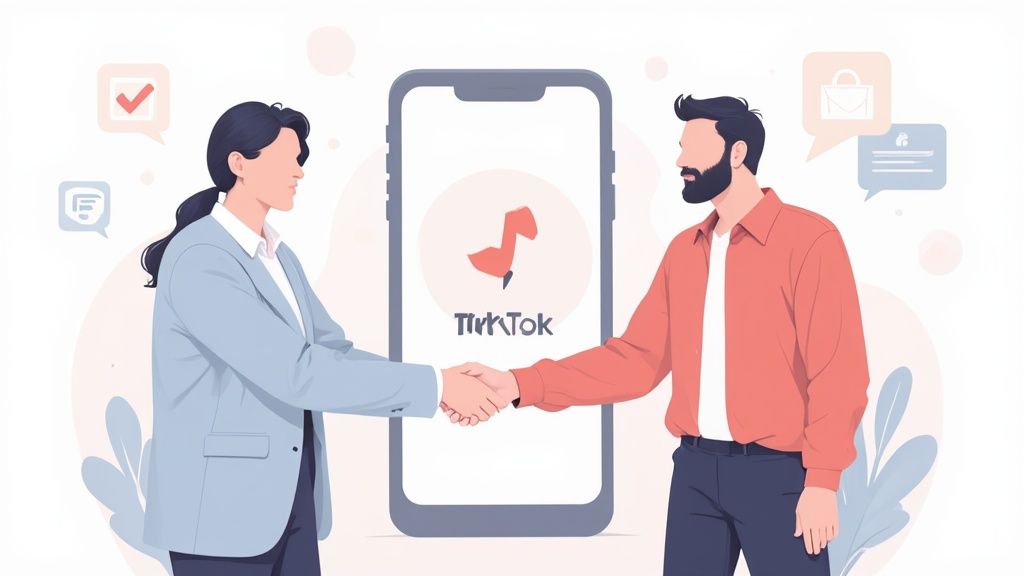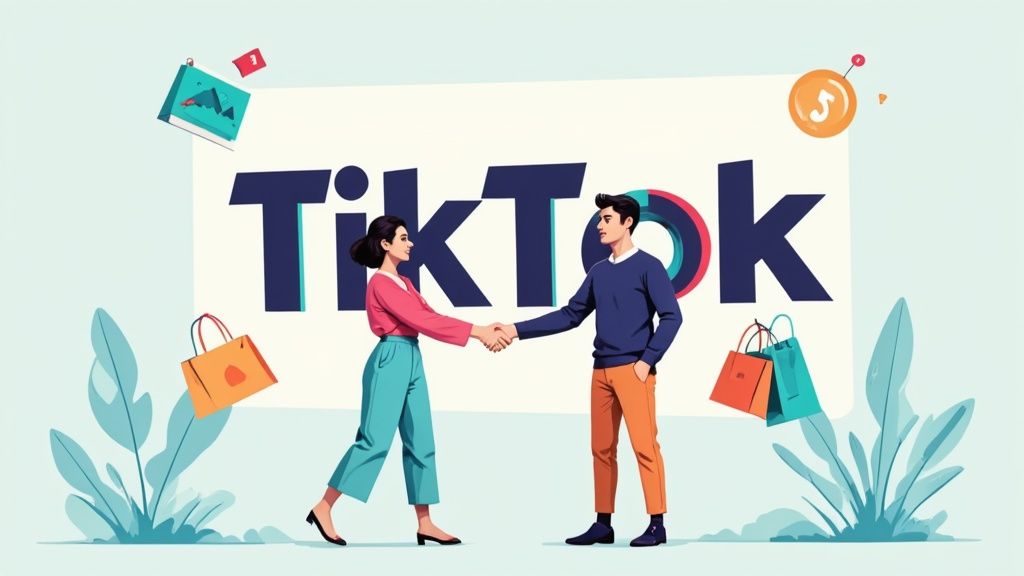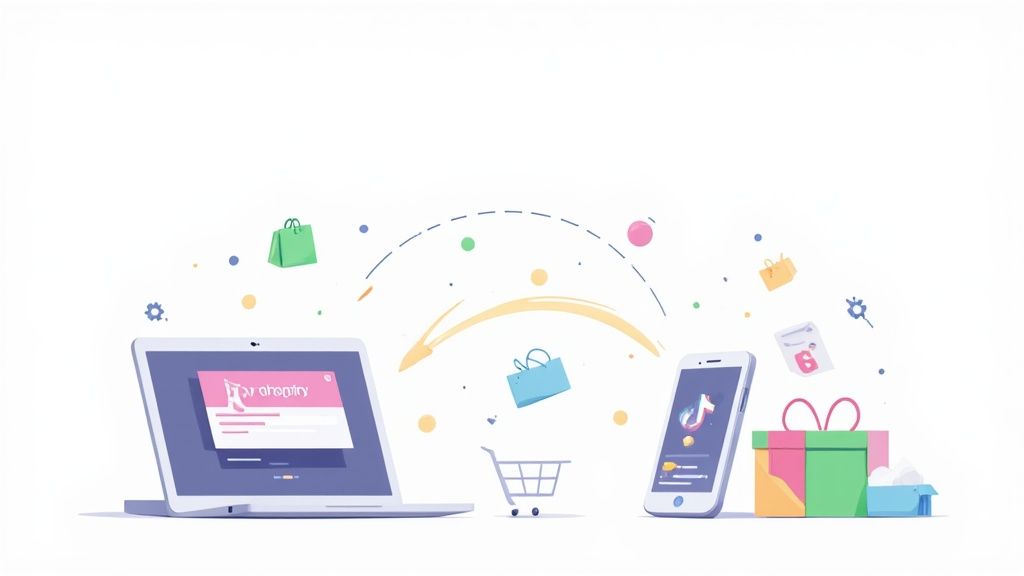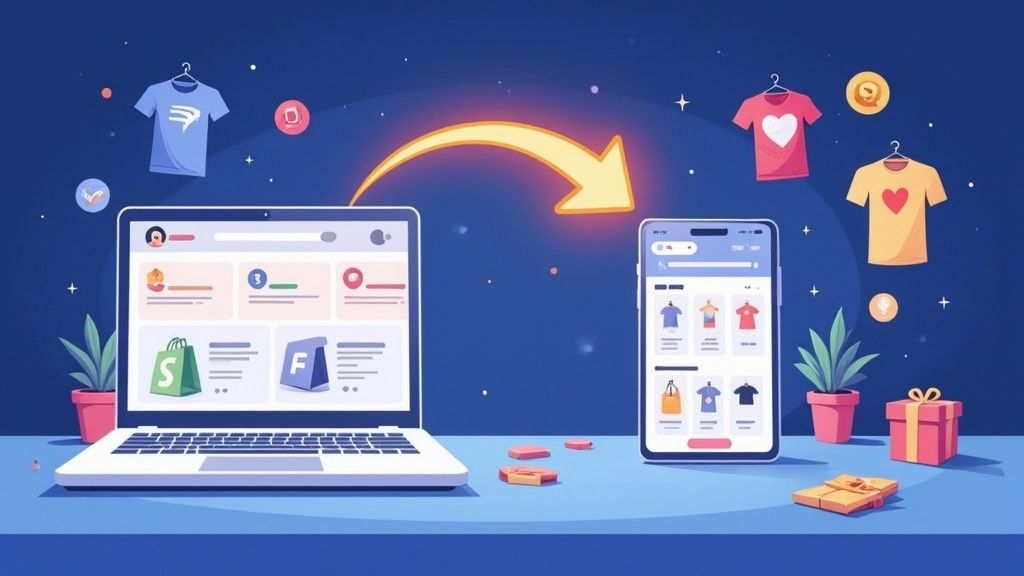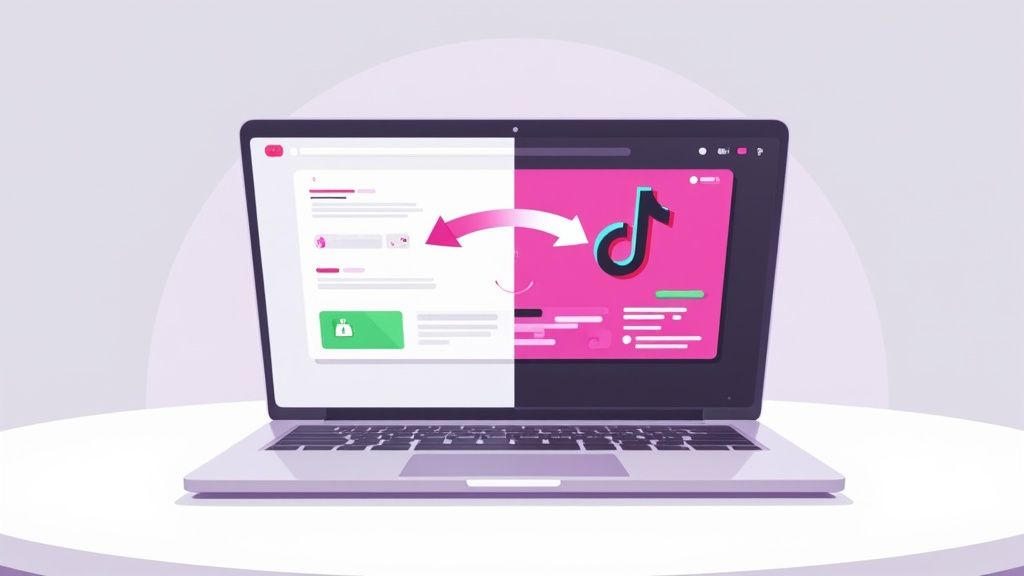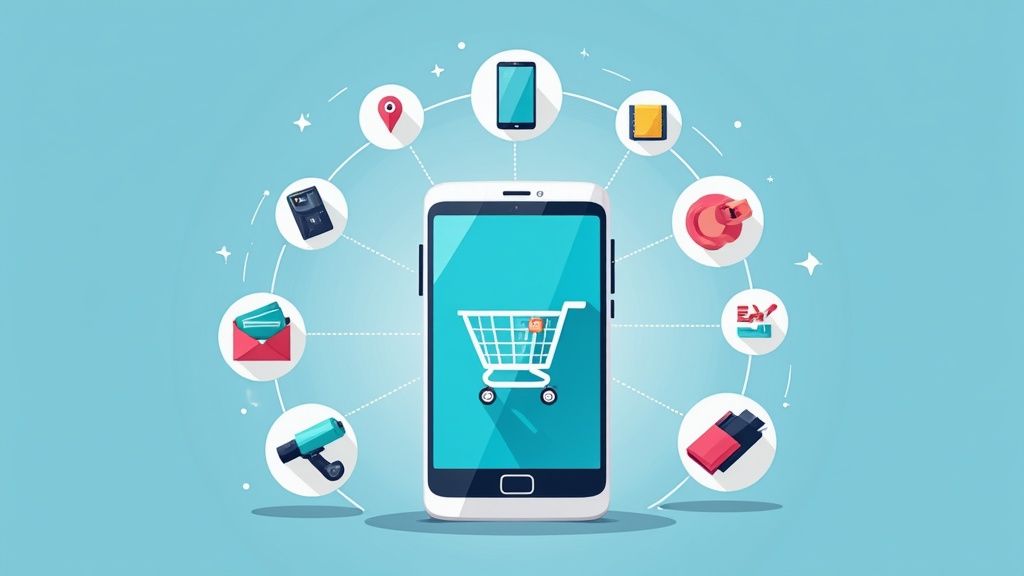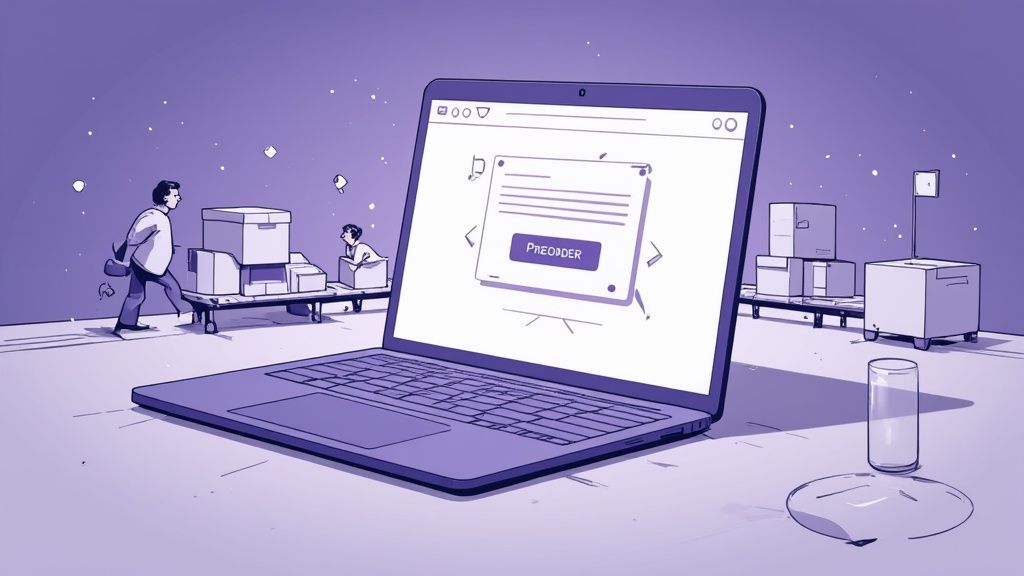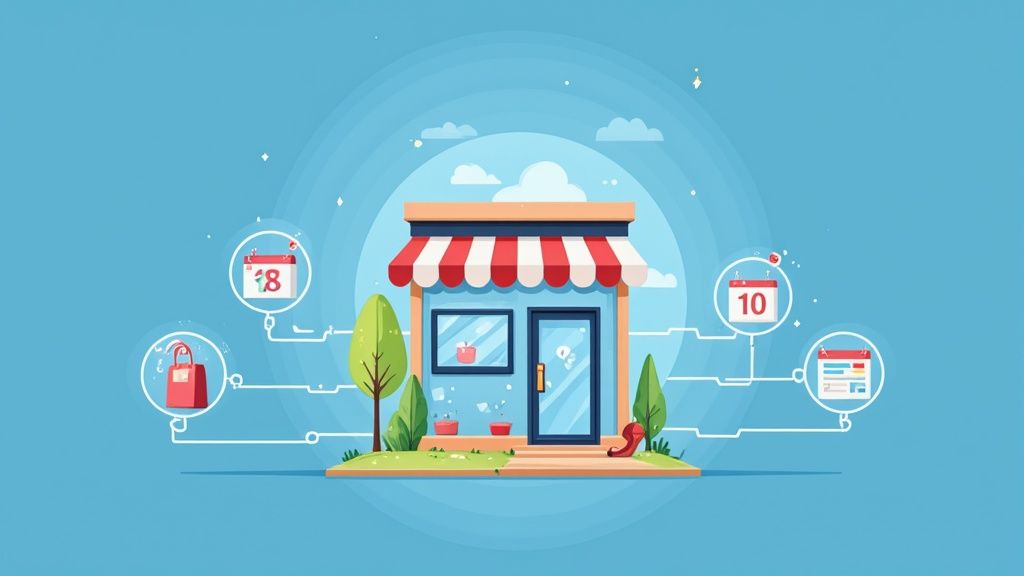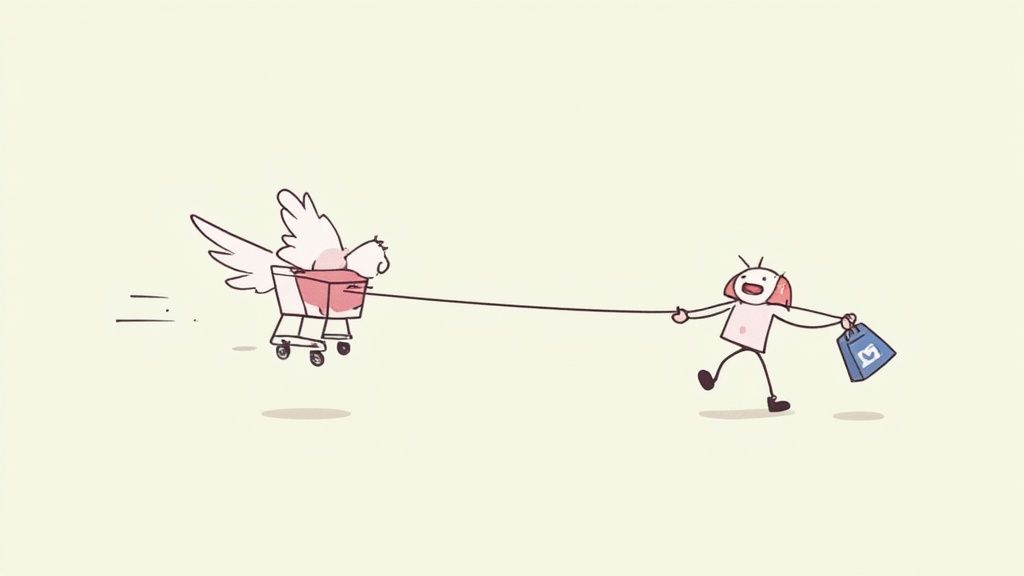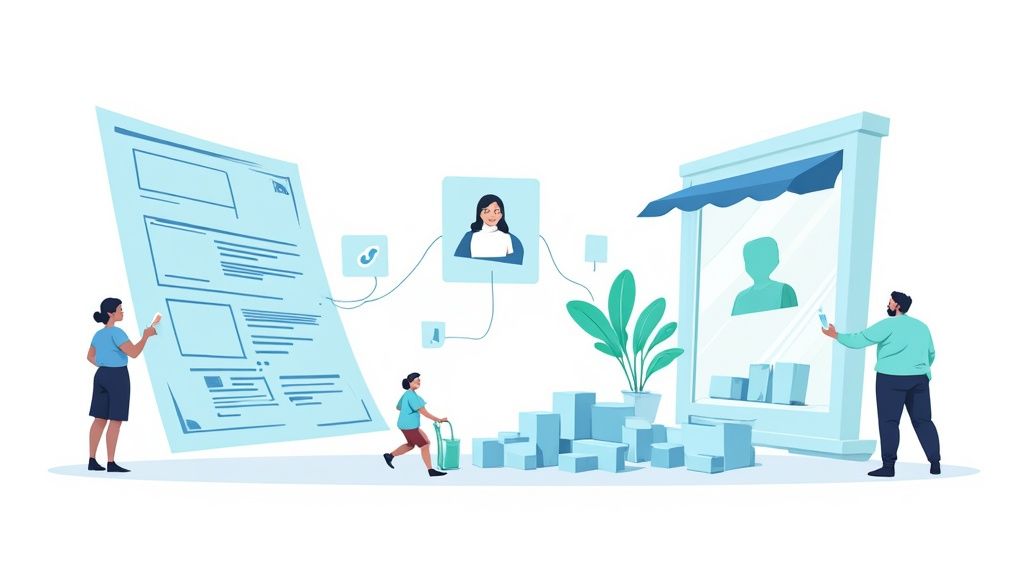
Before you can even think about reducing your customer acquisition cost, you first have to know what you’re really spending to get a new customer. It’s a common mistake to just glance at ad spend, but the real number is so much bigger. It includes everything from salaries and software subscriptions to creative costs.
Getting a firm grip on your total investment is the absolute first step. Only then can you start making smarter, more profitable decisions for your business.
First, Understand Your True Acquisition Cost
You can't fix a leak if you don't know where it's coming from. The same logic applies to your marketing budget. To effectively lower your customer acquisition cost (CAC), you have to look past the surface-level metrics and figure out your complete, all-in cost.
This means you need to account for every single dollar that goes into winning a new customer. A quick look at your ad spend might seem encouraging, but it often paints an incomplete and dangerously misleading picture of your financial health. A comprehensive calculation isn't just nice to have—it's non-negotiable for accurate financial planning.
Uncovering the Hidden Costs
So, how do you get your true CAC? You need to add up all the relevant expenses over a specific period. These often-overlooked costs are what give you an honest assessment.
- Marketing and Sales Salaries: This includes the full compensation for everyone on your team involved in acquisition efforts.
- Software and Tools: Factor in the subscription fees for your CRM, analytics platforms, email marketing services, and any other software you rely on.
- Overhead Costs: Don't forget to allocate a portion of your general business overhead to your marketing and sales departments.
Once you have this total figure, just divide it by the number of new customers you brought in during that same period. For a more detailed walkthrough of the math, check out our guide on how to calculate customer acquisition cost.
Benchmarking and Channel Audits
Once you have an accurate CAC, the next step is to see how it stacks up. Industry benchmarks can give you some valuable context. For example, industry data shows that the average CAC for a B2B sector like IT & Managed Services is around $454, while for Legal Services, it's closer to $749. This just goes to show how much acquisition costs can fluctuate based on things like product complexity and the length of your sales cycle.
The goal isn't just to calculate a number but to actually use it. A precise CAC empowers you to audit each acquisition channel, see which ones are delivering real value, and confidently cut the ones that are quietly draining your budget.
This chart breaks down the average customer acquisition cost across three common channels: paid ads, content marketing, and referrals.

As the data clearly shows, channels like referrals and content marketing often come with a significantly lower CAC than paid advertising. Right away, this points to a clear opportunity for reallocating your budget and getting more bang for your buck.
To help you prioritize, we've put together a table outlining the most effective strategies for reducing CAC and what you can expect from each.
Key Levers for Lowering CAC and Their Impact
This table highlights the most effective strategies for reducing CAC and the expected outcome for each, helping you prioritize your efforts for maximum impact.
Focusing on these strategic levers doesn't just chip away at your CAC; it fundamentally improves the health and profitability of your entire marketing ecosystem.
Turn Your Funnel into a Conversion Machine

Trying to fix a low conversion rate by just throwing more money at ads is a classic mistake. It's like trying to fill a leaky bucket with a fire hose—expensive, messy, and you're not actually fixing the hole. A much savvier move is to plug those leaks first. This is where conversion rate optimization (CRO) becomes your secret weapon for slashing your customer acquisition cost.
The whole idea is beautifully simple: get more customers from the traffic you already have. Every person who lands on your site and leaves without buying is a lost opportunity and, frankly, a waste of your ad budget. By methodically improving your website experience, you make every single acquisition dollar pull more weight.
This isn't about massive, bank-breaking redesigns. I've found that the biggest wins often come from small, hyper-focused changes that remove friction or build a little more trust.
Pinpoint and Fix Your Biggest Leaks
Your first job is to play detective. You need to figure out exactly where people are bailing on their journey to becoming a customer. Tools like Google Analytics or even heatmap software can tell a compelling story if you know where to look.
Hunt for pages with surprisingly high exit rates. Is it a specific product page? Or maybe the first step of your checkout is scaring people away? Once you've identified the problem spots, you can start making educated guesses about why people are leaving.
From my experience, the usual suspects for funnel leaks include:
- A Clunky Checkout Process: Nothing kills a sale faster than too many steps, surprise shipping costs, or being forced to create an account.
- Vague Calls-to-Action (CTAs): If a user isn't sure what to do next, their default action is often to do nothing at all and leave.
- Slow Page Load Speed: In the world of eCommerce, every second is precious. A slow-loading site is a frustrating experience that sends potential customers packing.
- A Lack of Trust Signals: Shoppers are wary. Missing security badges, a solid return policy, or customer reviews can be enough to make them second-guess their purchase.
A leaky funnel means you're paying to acquire visitors who never become customers. Fixing these leaks is the fastest way to get more value from your existing marketing spend and lower your CAC.
Test, Measure, and Optimize Relentlessly
Once you have a hypothesis—"I think my checkout is too complicated"—it's time to test it. This is the perfect job for A/B testing, also known as split testing. It’s a straightforward way to compare two versions of a page to see which one actually performs better with real users.
You could test a new headline, a different button color, or a simplified checkout form. I worked with a fashion brand that made a tiny change with huge results. They tested changing their main CTA from "Add to Bag" to "Buy It Now." That simple tweak created a bit more urgency and boosted their add-to-cart actions by a whopping 18%. That directly improved their conversion rate without spending a single extra dollar on ads.
Conversion rate optimization is a proven path to reduce CAC by making your marketing spend far more efficient. In B2C eCommerce, where the average CAC can run anywhere from $66 to $91 for industries like Fashion or Electronics, even a tiny bump in your conversion rate can translate into massive savings. You can see more on these industry benchmarks and potential gains over on usermaven.com.
Build an Organic Acquisition Engine with SEO

Paid ads get you instant traffic, sure, but you're essentially renting an audience. The minute you turn off the spending, your traffic disappears. SEO is a different game entirely. It’s about building a real, long-term asset that brings qualified customers to your digital doorstep, for free.
Think of it like owning your own well instead of paying for water delivery every single day. It takes more work to set up, but the payoff is massive. This is a game-changing strategy to reduce customer acquisition cost because you're creating content that solves problems your customers are already asking Google about.
Target High-Intent Keywords
First thing's first: you have to get inside your customer's head. What are they struggling with? What specific questions are they typing into that search bar right before they're ready to pull out their credit card? The goal is to find high-intent keywords that show someone is close to buying, not just casually browsing.
So, instead of a super broad term like "running shoes," you’d get much better results with a long-tail keyword like "best trail running shoes for flat feet." The person searching for that is way further down the purchasing path.
To uncover these gems, use a good keyword research tool to find questions, comparisons, and specific problems your competitors have overlooked. Keep an eye out for phrases that include words like:
- "Best" or "Top" (e.g., "best vitamin C serum for sensitive skin")
- "Vs" or "Alternatives" (e.g., "Shopify vs BigCommerce")
- "How to" (e.g., "how to set up a home coffee station")
- "Review" (e.g., "Brand X espresso machine review")
These are the keywords that attract people who've done their initial homework and are now looking to make a final decision. Grabbing this traffic is a direct route to acquiring customers for a fraction of what you'd spend on broad, expensive ad campaigns.
Create Genuinely Valuable Content
Once you have your list of keywords, your job isn't to just sprinkle them into a bland blog post. You need to create the best, most helpful answer on the entire internet for that specific query. This is how you build real trust and authority with both users and Google, which is what gets you to the top of the search results.
This means thinking beyond just product pages. You could create:
- In-depth buying guides that walk a customer through solving a problem.
- Honest comparison articles that review different products in your niche.
- Free tools or calculators that offer instant, tangible value.
A great example comes from Renaissance Digital Marketing, a firm that lives and breathes this stuff. They zeroed in on this approach, pairing sharp content optimization with technical SEO fixes. The result? They saw a 45% jump in organic traffic in just six months. More importantly, that directly led to a 30% reduction in their CAC, all because organic leads are so much more cost-effective.
SEO isn’t a quick fix; it's a long-term investment in your brand's future. By becoming a trusted resource, you create a flywheel effect where organic traffic and sales grow steadily over time, making your business less reliant on expensive ads.
This approach transforms your website from a simple digital shop into a powerhouse organic acquisition engine. Every piece of content you publish becomes a digital asset working for you around the clock, bringing in new customers and systematically pushing your average acquisition costs down. For sustainable, profitable growth, it’s the ultimate play.
Keep Your Customers Coming Back for More
The endless chase for new customers is exhausting, and frankly, it's getting more expensive by the day. But what if I told you one of the most effective ways to lower your customer acquisition cost has nothing to do with finding new people? It’s all about focusing on the customers you already have.
Shifting your attention to customer retention isn't just some feel-good platitude; it's a cold, hard financial strategy. When a customer comes back to buy from you again (and again), the initial cost to acquire them gets spread thinner and thinner, making that first investment incredibly profitable over time. This breaks you out of the constant churn-and-burn cycle and helps you build a stable, predictable revenue stream.
From First Purchase to Lifelong Fan
Think of a customer's first purchase not as the finish line, but as the starting gun. What you do after they've clicked "buy" and handed over their money is what truly determines if they'll ever return. This is where a smart retention strategy separates the thriving brands from the ones just treading water.
Great retention really boils down to three things:
- Meaningful Loyalty Programs: Ditch the generic "buy 10, get one free" model. Think bigger. Offer tiered rewards that unlock exclusive perks, early access to new product drops, or special birthday discounts. The goal is to make them feel like a valued insider, not just another number.
- Smart Email Marketing: Your customer’s inbox is sacred ground. Don’t just spam it with promotions. Re-engage past buyers with personalized recommendations based on what they bought before. A simple "we miss you" campaign with a small, exclusive offer can work wonders. You can also send them valuable content that helps them get more out of the products they've already purchased.
- Exceptional Customer Service: Problems happen. It’s unavoidable. But how you handle them is what matters. A fast, empathetic, and effective solution can turn a frustrated customer into your most vocal supporter. This is a make-or-break moment that so many brands get wrong.
We get that this is a huge topic, which is why we've put together a dedicated guide on proven eCommerce customer retention strategies to give you even more ideas you can implement right away.
The Power of the LTV to CAC Ratio
To really see the financial impact of retention, you need to get familiar with two key metrics: Customer Lifetime Value (LTV) and Customer Acquisition Cost (CAC). LTV is the total amount of money you can realistically expect to earn from a single customer throughout their entire relationship with your brand.
A healthy business typically aims for an LTV to CAC ratio of around 3:1. This means for every dollar you spend to acquire a customer, you make three dollars back over their lifetime.
When you boost your customer retention, you directly increase your LTV. As LTV climbs, that initial acquisition cost becomes a much smaller piece of the puzzle, giving you more cash and confidence to invest in growth.
This isn't just a "nice-to-have" anymore; it's a survival tactic. The cost of acquiring a customer has been on a steep climb for years. Data shows that between 2013 and 2022, the average CAC skyrocketed from $9 to $29. That's a staggering 222% increase. You can dig into more of the data behind these rising eCommerce costs on loyaltylion.com, but the message is clear.
With ad costs continuing to rise, you can't afford to treat customers as one-time transactions. Building a loyal, repeat customer base is the most reliable way to insulate your business from the ever-growing expense of finding new ones.
Sharpen Your Targeting and Channel Strategy

Spreading your marketing budget thinly across a dozen different channels is one of the fastest ways to burn cash. It feels like you're covering all your bases, but in reality, you're just playing a guessing game and inflating your customer acquisition cost. To truly get your CAC under control, you have to stop guessing and start making calculated bets based on cold, hard performance data.
The idea is simple enough: find out what’s actually working and do more of it. Just as important, you need the confidence to slash the channels that aren’t pulling their weight. This means getting ruthless with your data analysis and developing a deep, almost intuitive understanding of who your ideal customer really is.
Double Down on Your Winning Channels
First things first, you need to conduct a thorough audit of all your marketing channels. Dive into your performance data in a tool like Google Analytics and ask a straightforward question for each one: what's my CAC here? You'll almost certainly find that a couple of channels are driving the vast majority of your profitable conversions.
These are your winners. A digital marketing agency I know recently reviewed their client acquisition strategy. They were spending across five different platforms, but a deep dive revealed that 80% of their highest-value clients came from just two of them. By reallocating their budget from the poor performers to their top two, they managed to cut their overall CAC by a solid 15% inside of six months. This kind of focus lets you spend with precision instead of just spraying your budget across the internet and hoping for the best.
It's not about being on every platform; it's about dominating the platforms where your best customers spend their time. Smart resource allocation is the key to making every marketing dollar work harder for you.
Craft Detailed Personas and Lookalike Audiences
Broad, generic targeting is expensive. You're essentially paying to show your ads to people who have zero interest in what you're selling. The fix is to get hyper-specific about who you're talking to by building out detailed buyer personas. Go way beyond basic demographics. What are their pain points? What motivates them? Where do they hang out online?
Once you have a crystal-clear picture of your ideal customer, you can unleash the power of lookalike audiences on platforms like Facebook and Google. These platforms use their massive datasets to find new people who share the exact characteristics of your most valuable existing customers. It’s an incredibly effective way to find high-potential buyers who are much more likely to convert.
This approach delivers some serious benefits:
- Lower Wasted Ad Spend: You’re reaching a far more relevant audience right from the get-go.
- Higher Conversion Rates: Your message resonates because it's tailored to people who are already primed to be interested.
- Improved Ad Relevance Scores: The platforms reward you for showing relevant ads to engaged audiences, often with lower costs.
Finally, don't sleep on remarketing. Re-engaging warm leads who have already visited your site is one of the most cost-effective tactics in the game. They already know you, which makes them much cheaper to convert than cold traffic. A well-crafted remarketing campaign can be the gentle nudge that brings hesitant shoppers back to complete their purchase, giving a final, crucial boost to your efforts to reduce customer acquisition cost.
Common Questions About Lowering CAC
Even with the best strategies in hand, the path to a lower customer acquisition cost can bring up some tricky questions. Let's dig into some of the most common hurdles eCommerce brands face so you can move forward with confidence.
Getting clear, straightforward answers is what separates effective implementation from costly missteps. Understanding the real meaning behind metrics like LTV or knowing which channels to prioritize (and which to cut) will sharpen your approach.
What Is a Good LTV to CAC Ratio?
If you're looking for a solid benchmark, a healthy eCommerce business should aim for a Customer Lifetime Value (LTV) to Customer Acquisition Cost (CAC) ratio of 3:1. In simple terms, this means for every dollar you put into acquiring a customer, you should be getting three dollars back over their lifetime with your brand.
It's a real balancing act.
A ratio of 1:1 or lower is a red flag. It suggests you're likely spending way too much on acquisition and probably losing money on every new customer you bring in. On the flip side, a really high ratio, like 6:1 or 7:1, might sound amazing, but it could actually mean you're not investing enough in your marketing. You could be leaving serious growth on the table.
Sticking close to that 3:1 sweet spot is the goal. It shows your marketing dollars are not only profitable but are also fueling sustainable growth—the perfect equilibrium between spending and return.
How Long Does It Take to See a Reduction in CAC from SEO?
This is a big one. Unlike the almost instant feedback you get from paid ads, SEO is a long game. It's a true investment in your brand's authority, and you shouldn't expect an immediate drop in your blended CAC.
Realistically, you're looking at a timeline of 6 to 12 months to see a tangible impact on your acquisition costs from organic search.
You'll see early signs of life, like better keyword rankings and a slow climb in organic traffic, probably within the first few months. But the real, cost-cutting power of SEO comes later, as your content earns backlinks, builds trust with search engines, and establishes you as an authority in your niche. It takes patience, but the reward is a steady, low-cost stream of customers that pays off for years.
Which Channel Should I Cut First to Lower My CAC?
When the budget gets tight, the natural instinct is to start slashing spend. Before you do anything, the smartest first move is to dive deep into your analytics. You need to pinpoint the channel with the highest cost per acquisition and the lowest conversion rate. This underperformer is usually your prime candidate to pause or cut.
But hold on a second.
Before you pull the plug, you absolutely have to look at the LTV of the customers coming from that channel. Sometimes a channel has a high CAC but brings in your most loyal, highest-spending customers. Cutting it without a solid plan to replace that value could end up hurting your business more than it helps. Always let the data, not just your gut, drive these big decisions.
At ECORN, we specialize in turning these strategies into reality for growing eCommerce brands. From optimizing your conversion funnel to building a powerful retention engine, our team of Shopify experts is ready to help you lower your CAC and scale profitably. Discover our flexible solutions and see how we can help your brand grow.






